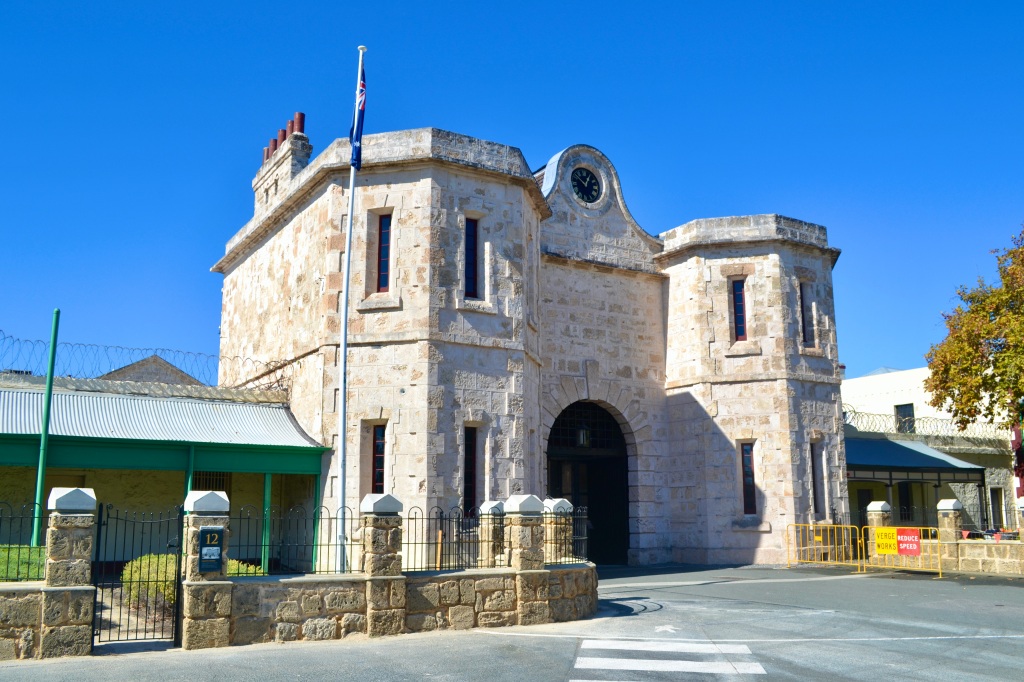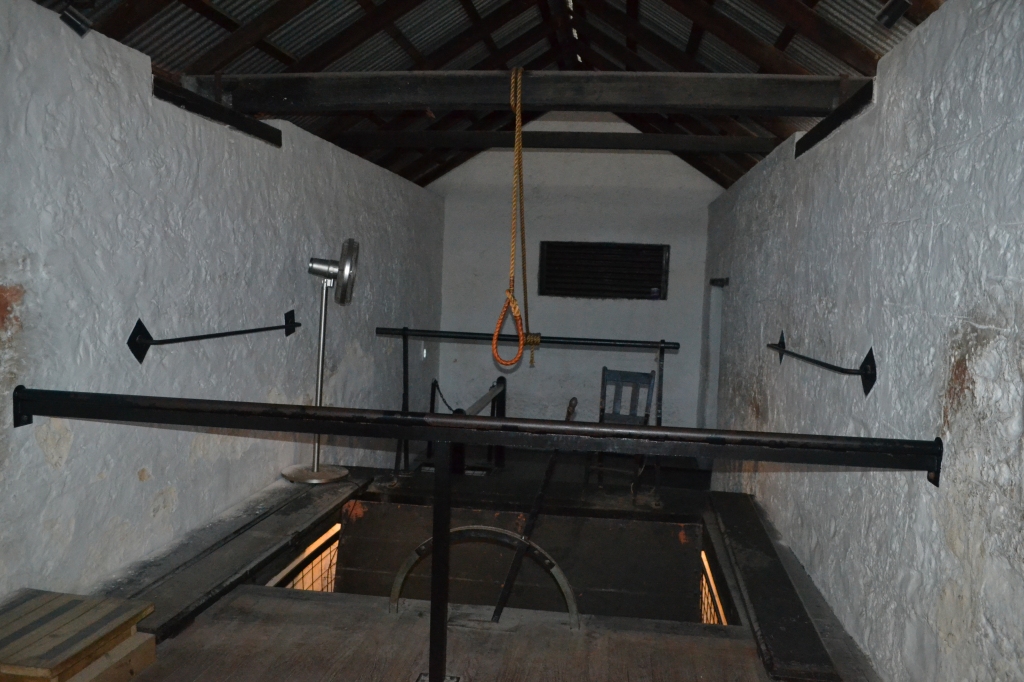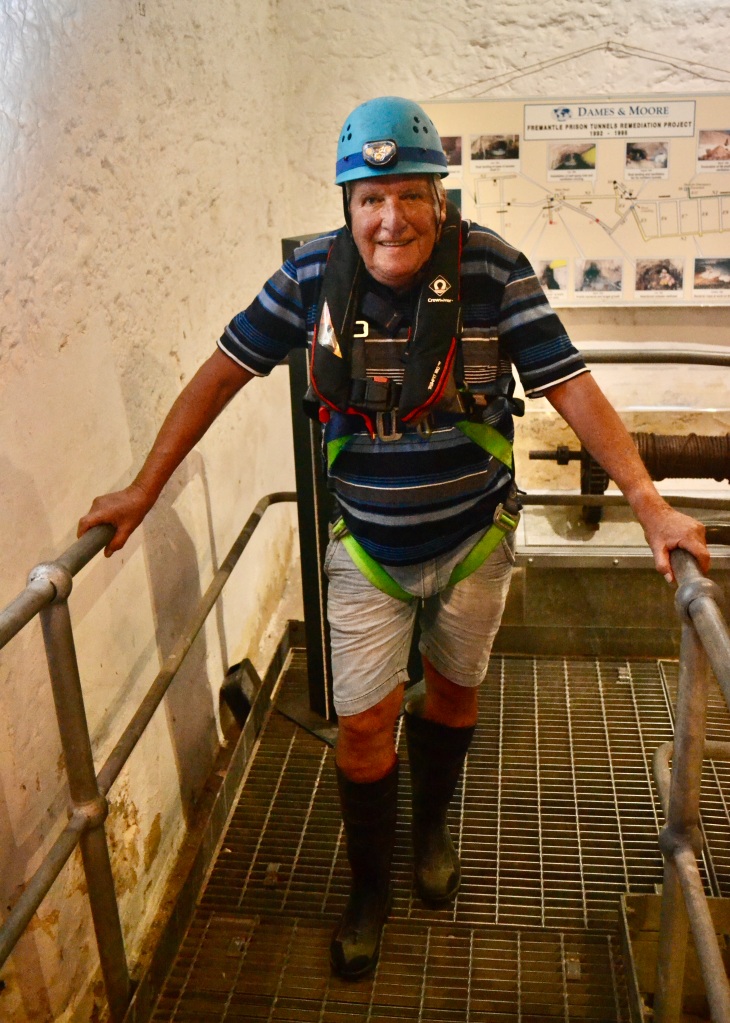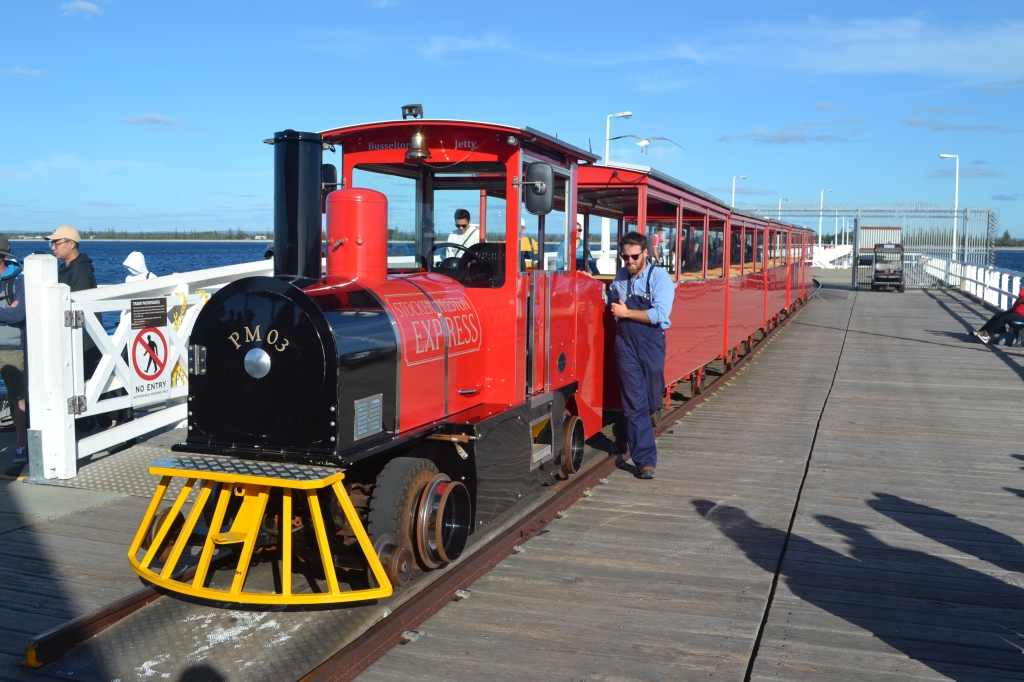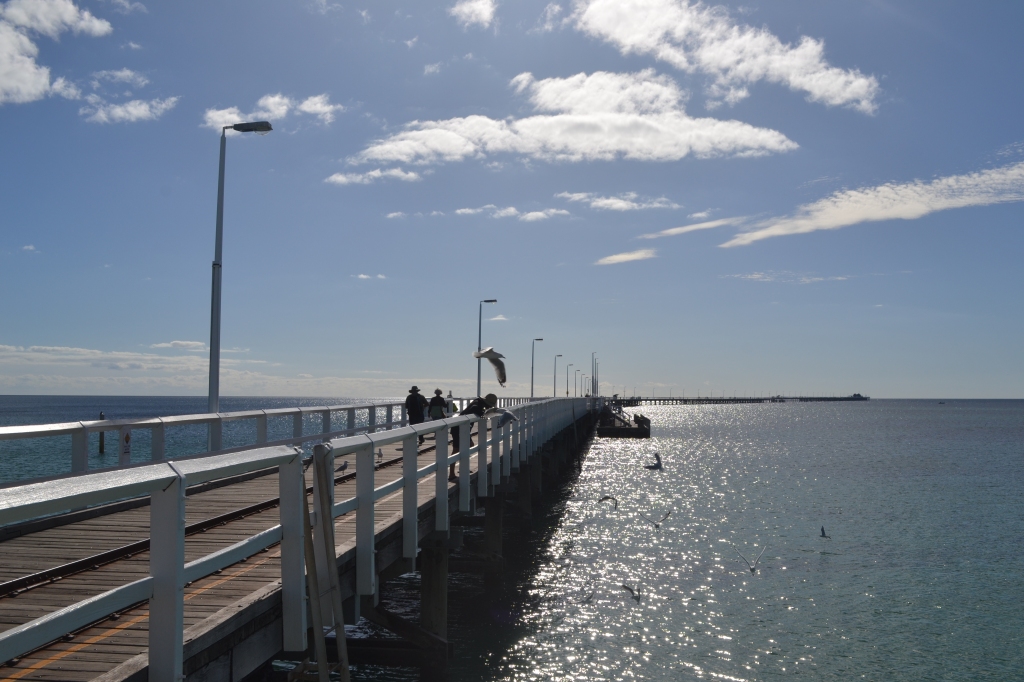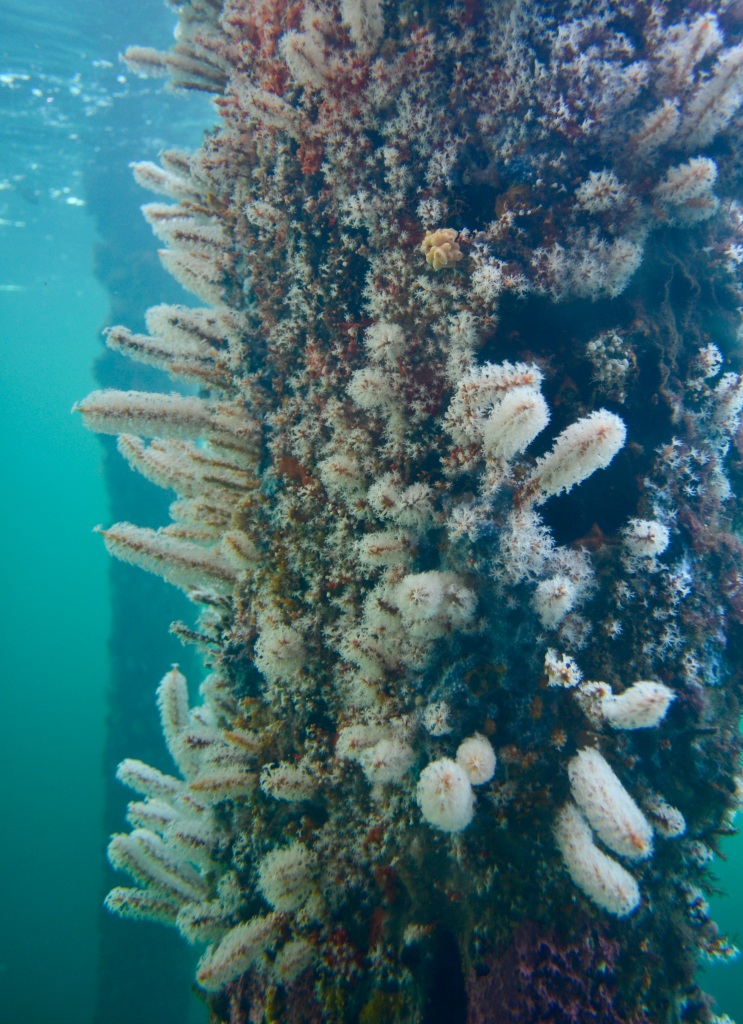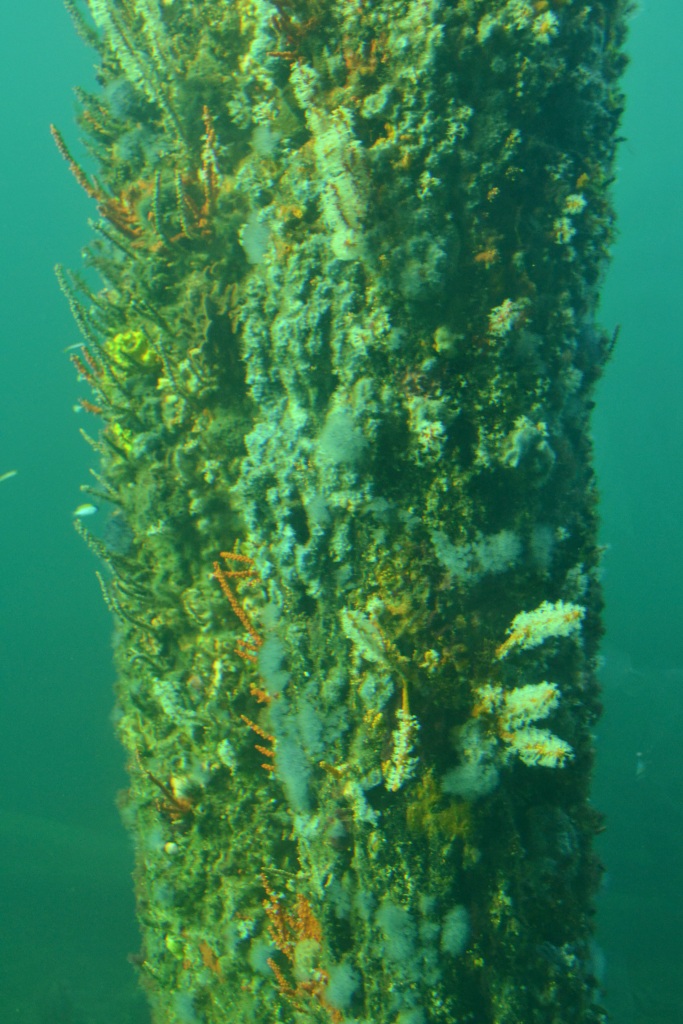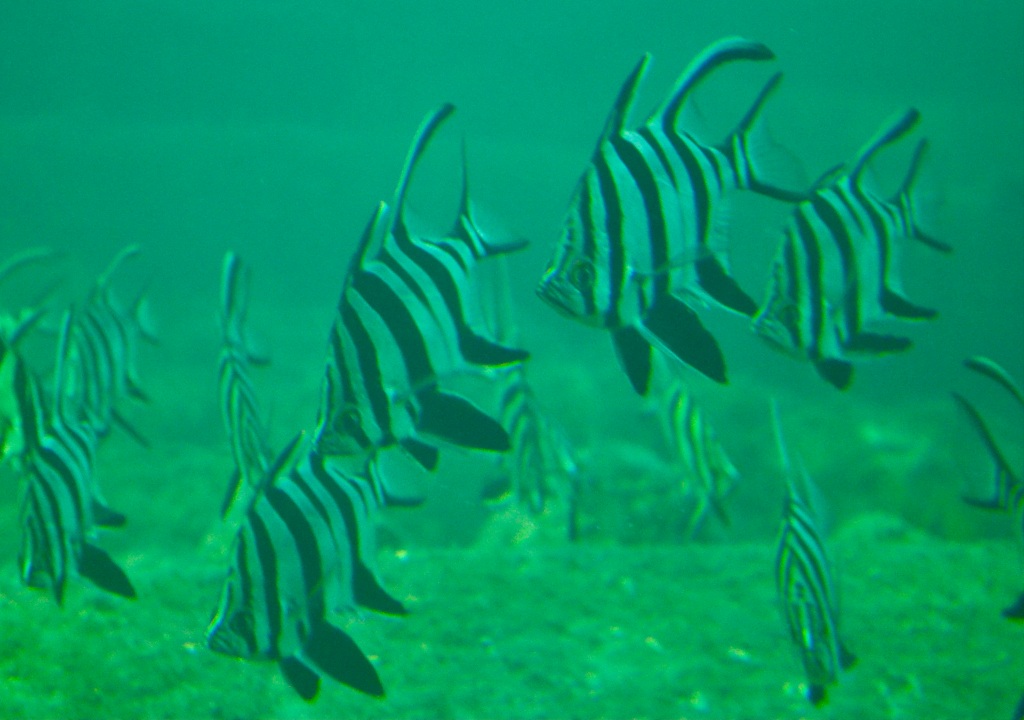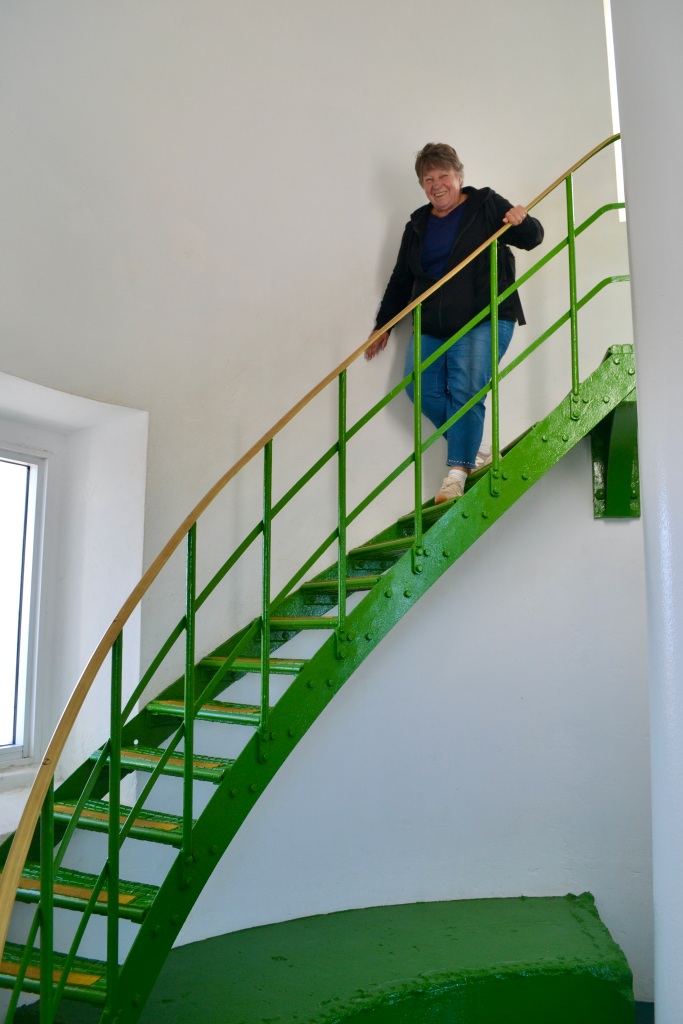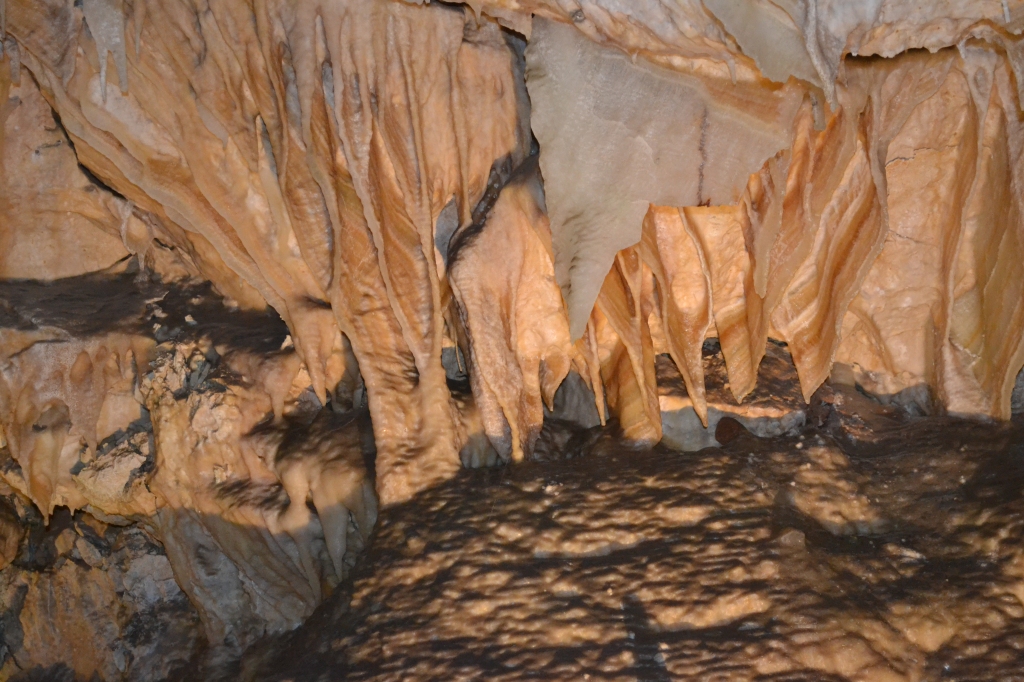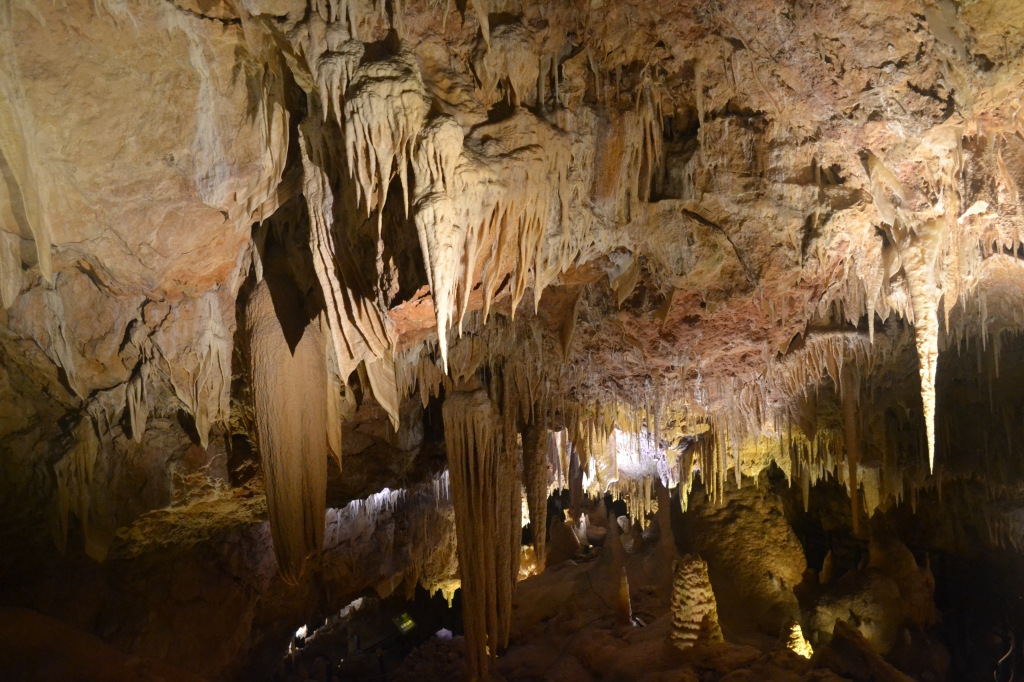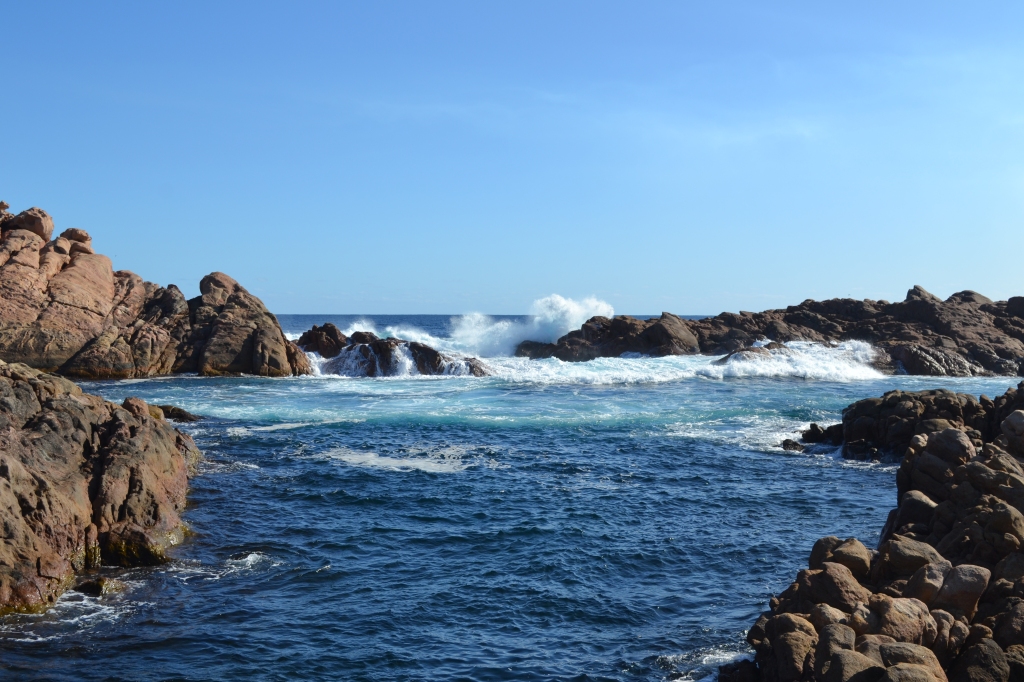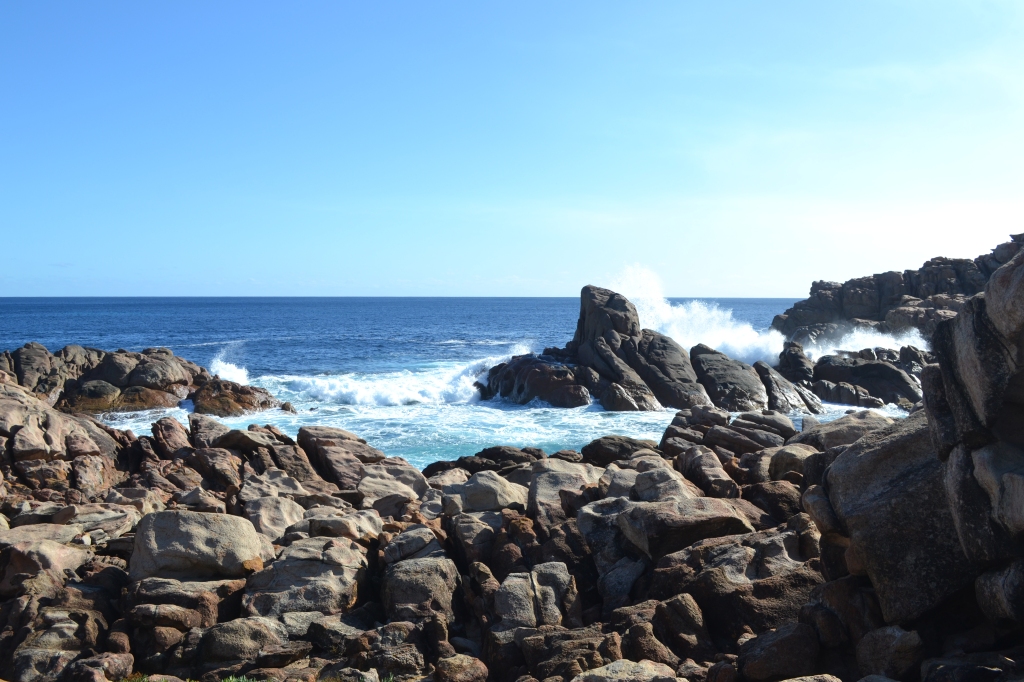Coogee WA to Albany WA
After a very tense afternoon of trying to secure accommodation, we finally booked into our caravan park late in the day. That night we had a visit from a little Bandicoot checking our campsite for supper. He hung around for a short time and certainly was not afraid of us. All food was neatly packed away that night. The following morning, we drove into the Perth CBD. Our first impression was that of a very clean and pretty place. Ken had been to Perth many years earlier and was totally surprised at how it had grown. He remembered it as a large historic regional town and now it was a thriving mixture of new and old. An expanding city built around a lovely harbour.
We started at Kings Park. Which is in the heart of the city. The main area focus ‘s around the war memorial which is surrounded by beautiful lawns looking over gorgeous views of the city and the harbour. We walked through the Botanic gardens and then went down to photograph the Crawley Edge boathouse. A gorgeous historical boatshed located on the Swan River. Built in 1930’s and one of those scene’s that result in a postcard photograph. After a light lunch in the park café and a little more wandering around the sparse grounds of Kings Park we headed for the pedestrian walkway on the edge of the river. Matagarup Bridge is a magnificent suspension bridge crossing over the Swan River providing pedestrian access to East Perth and Burswood. Its total length is 370m and it is 9m wide. Since we visited, they have opened a bridge climb and a zip line experience. I can imagine that being very popular with both locals and tourists. Possibly more important to some is the grand access to the Perth Optus Stadium which makes for a spectacular start for a day out or a celebratory evening.
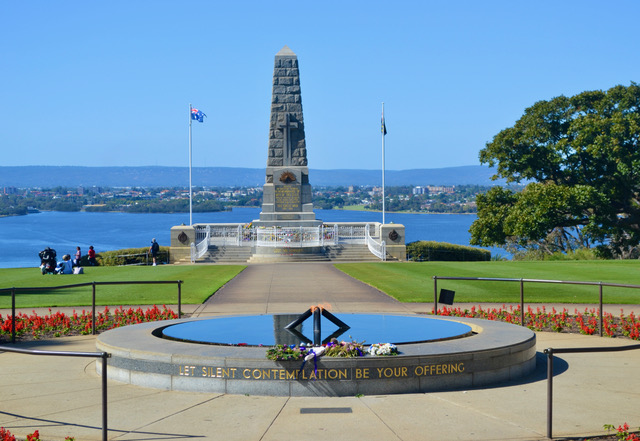
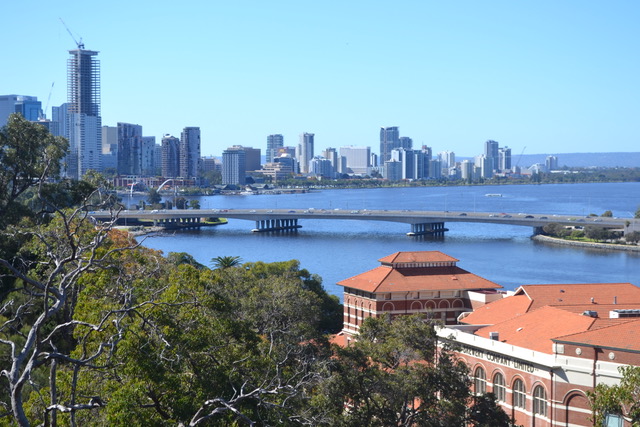
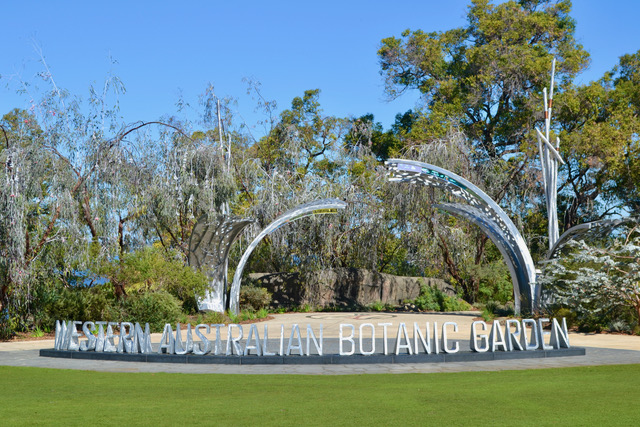


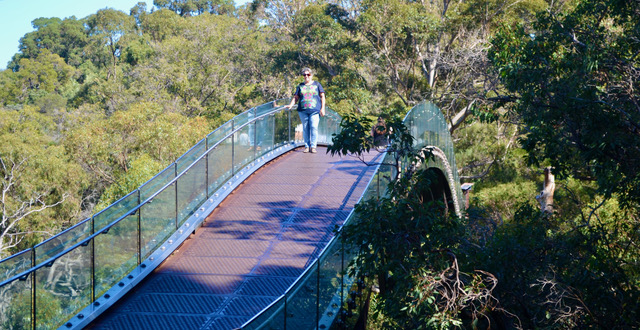
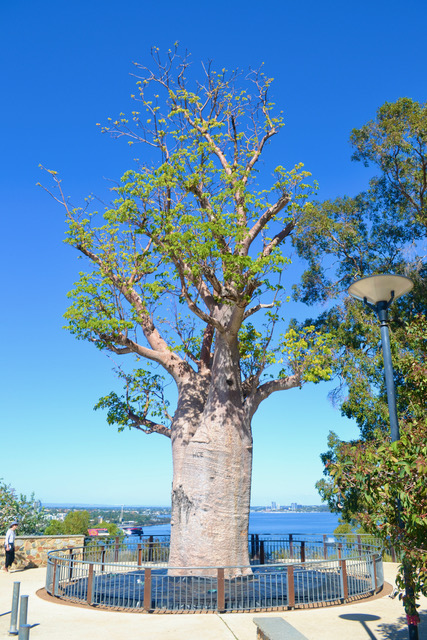
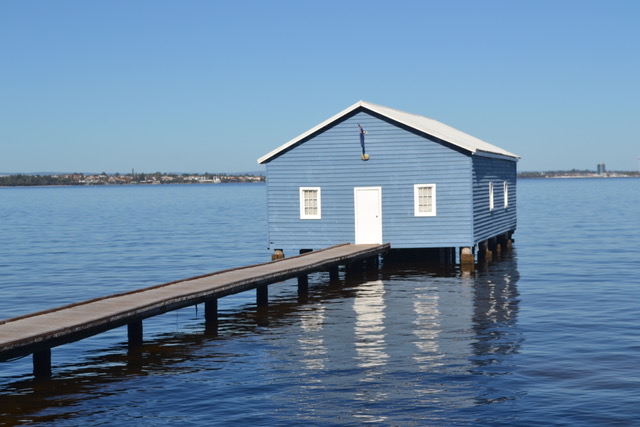
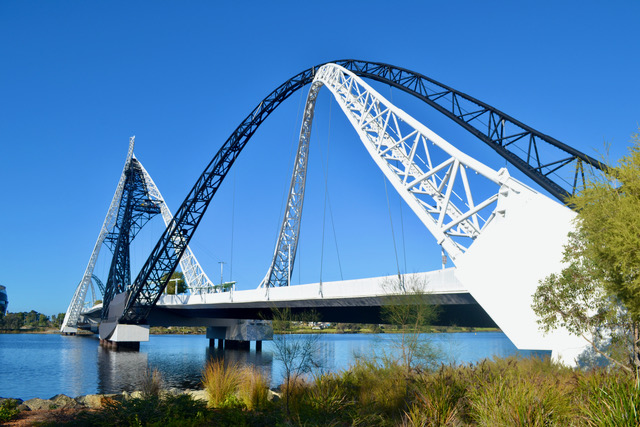
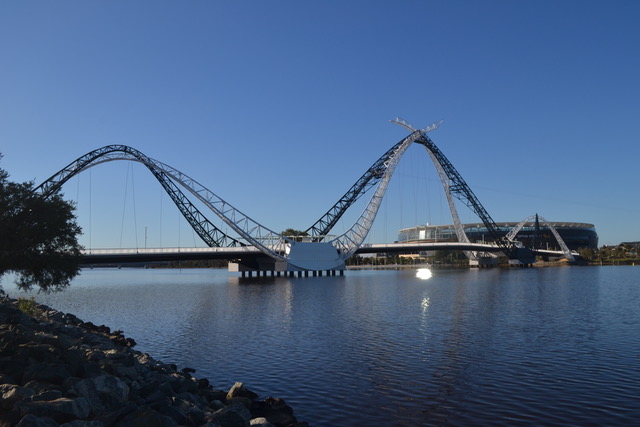
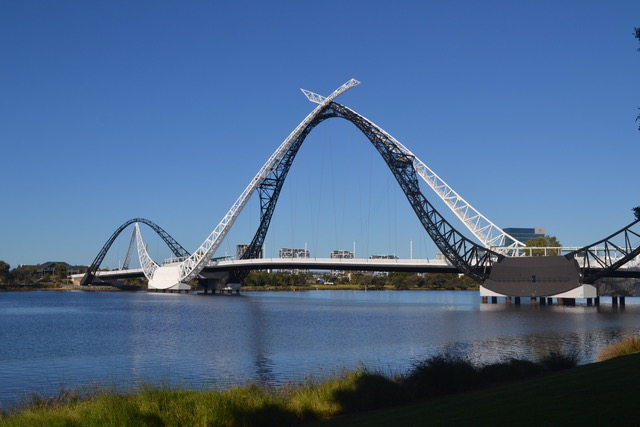
We hurried back to the caravan park as Ken wanted to get a good view of the the shipwreck of the Omeo, blown ashore in 1905 just a short drive from our caravan park at Coogee (Pronounced Coo Gee.)
The next day I had quite a bit of work to catch up on so Ken ventured into Fremantle without me. The Gaol was his destination, and he spent many hours there doing three different tours. He came home a very sore and happy man with tales to tell and photos to show. His recommendation if you are in WA. See the photos below.
The next morning, we drove just over 2 hrs to Busselton, we booked into a caravan park and headed straight to the foreshore to see the Busselton Jetty. Famous for its length of 1.841 kilometres. The longest timber-piled jetty in the Southern Hemisphere. You can walk the entire length or join the other tourists and ride on the cute little red train. We chose the train this time and listened to the commentary along the way. Walking would have been quicker though but maybe not as much fun. When you reach the end there is an underwater observatory. It is amazing the variety and the colour of the coral growing on the jetty pylons deep beneath us. There are many schools of fish that can be seen through the various windows provided on each level as you descend about 8 metres below the surface. You are not rushed, and a guide is available for questions. Finishing with a quaint gift shop to browse as you wait for your return train journey. It takes approximately 2 hours and well worth the time. We meandered back along the water’s edge for coffee and cake. Several eating and drinking establishments are available and an extremely fun looking playing area for the kids to enjoy. We needed a Woolworths and a Bunnings that day, so off we went to search the town. Back to the caravan for some wine and cheese before dinner.
Starting early the next day, we drove to the Cape Naturaliste Lighthouse for a guided tour. Thirteen kilometres from the town of Dunsborough in the Leewin-Naturaliste National Park. As this is a working lighthouse a guided tour is the only way to see inside the building. There are around 59 small stairs to reach the top balcony and take advantage of the panoramic view of the Indian Ocean and the surrounding bushlands. The lighthouse is in very good condition and the original workspaces well preserved. Our tour guide was easy to understand and very informative about the history of the area, and the current work being performed at the lighthouse. The grounds are well kept, and an inviting coffee shop is waiting for you when the tour is done. Twenty minutes’ drive away we stopped at Yallingup to see the Ngilgi (pronounced niggly) limestone caves. We have been in many caves in our lifetime but even though there are similarities we always find a uniqueness about each cave.
This one headed straight down into a small cavern where the guide showed us some classic formations, talked about the difference aspects of the cave, and then left us on our own to choose a path to follow. This is the best way to explore a cave as you get to go where you want and at your own pace. No waiting for twenty other people to take selfies before you can photograph without someone in the frame. After completely exhausting our-selves we eventually arrived at the exit. We thoroughly enjoyed the experience and discovered we were in desperate need of food and water. We stopped for a Frankfurt and Sauerkraut roll with coffee, which was very tasty and took off for Canal Rocks. Another site in the Leewin-Naturaliste National Park, southwest of Yallingup. There is a man-made narrow bridge which crosses between rocks on Smiths beach and the ocean. At the end of the bridge one can negotiate carefully over the rocks to get a great view of the ocean’s power as it hits the many canals between the rocks. Where Ken is happiest wandering through the bush, I can sit endlessly watching the ocean waves crashing on the rocks. Unfortunately, we were hampered from doing this, as a very rude woman and her family were blocking the entrance to the wilderness of the many rocky outcrops. We waited on the bridge for some time but eventually gave up as we heard her mention to someone that she was not giving up her vantage point. The longer we waited the more our fixation was on this woman rather than the view. We were still able to see the beauty of the area and clamoured over other rocks to see different aspects of the waves. It just leaves a bitter taste in your mouth when people are so selfish.
During our return drive we noticed the names of the towns had the same ending. Yallingup, Quindalup, Wilyabrup and Carbunup. Intriguing enough to have me googling. Apparently, the suffix “up” in the dialect of the Noongar language means “place of”. Satisfied now and thankful for Google we moved on.
Our next stop was to be Margaret River, however we decided to give this area a miss. We had no wish to visit wineries, so we headed straight to Hamelin Bay with the hope of seeing the stingrays up close. As part of the Ngari Capes Marine Park, Hamelin Bay has shallow waters and perfect to view the stingrays mining for food. We had read clear and calm days were the optimum and of course we chose a windy and cool day. With hope we headed to the water’s edge. We were in luck, a large and a medium size stingray were foraging in the water. They move quite quickly floating seamlessly just below the surface with undulating movements which allow you to see a little more of their body as they break the surface. Such beautiful creatures to watch. Once again though the view was interrupted by ignorant people doing what they should not. Signs on the way down to the beach say. Look but don’t touch, stay several metres away, don’t walk or swim near the rays. Several people standing within inches of them, one snorkelling on top of the smaller one. Our frustration levels soared once again to the point of arguing with one family who just laughed us off. They did move away while we were there, but our guess is they were back at it as soon as we left. Would I have been sorry if a stingray barb found them, definitely not. One can only hope.
Venturing on we visited Leeuwin Lighthouse at the most south-westerly point of Australia, on our way to Augusta. It is also the tallest lighthouse in Australia at 39 metres. It is situated on a peninsular where the Southern and Indian Oceans meet. With Antarctica to the south and Africa to the west.
Thankfully I did not have to walk the steps in this one. We were happy to just see the view from the peninsular where it soars a mere 56 metres above sea level. Once again, the grounds are well maintained, the walk to the base of the lighthouse has great views of the surrounding area. There are a few of the old stone houses open for inspection and a café and gift shop on the way out.
That night we camped out at Alexandra Bridge. A donation camp beside the river with beautiful natural bush camp sites, drop toilets and cold showers available. On arrival we were greeted by a couple of local ducks chasing each other around the campsites. The atmosphere was perfect for a campfire, so we dragged out the Drifta pit fire and settled down to watch the flames. It lasted an hour or so before a light rainfall forced us indoors. We were heading along the bottom of WA now toward Albany via Walpole. An hour along the Great Forest Drive took us to Pemberton, a cute town, known for the popular Karri tree. Apparently, the 3rd tallest tree in Australia reaching heights of 90 metres. The town itself has a lot of appeal with parks and many café’s, art and craft shops lining the main street. It was drizzling rain that day so after coffee and muffins we decided to head for the Gloucester Tree climb. The tree has climbing pegs up to 42 metres reaching a viewing platform. It does go further again however it was closed for restoration that day. The pegs are quite a distance apart and my legs would only stretch so far. For the sake of a photo, 3 rungs were all I could handle. It is a magnificent tree and surrounded by natural bush setting with walks and picnic areas. The rain was only light, so we headed off to the Warren National Park where we found the Dave Evans Bicentennial tree. Another Karri tree, one of the 18 fire lookout towers spread out across the southwest forests. This tree was first used in this way in 1947. It too 6 hrs using a belt and climbing boots to reach the top. Today it is a tourist attraction and can be climbed if you are game. We watched as a young fit guy mastered the 53 metres and back down again.
He was exhausted but exhilarated by the experience. We on the other hand were happy with a few rungs of the ladder once again. The rain had stopped now so we moved on to do the loop walk to the cascades. Nothing spectacular but a nice, pleasant walk along the river.
We had planned on staying in a free camp at Windy Harbour just 27 km south of Northcliffe. When we arrived the campground and the surrounds looked a bit neglected and isolated, so we were a bit unsure. We took a drive around within the D’Entrecasteaux National Park and discovered the walk to The Window. A path winding up to a lookout takes you to a point above a rocky crop with a gap showing the waters below. It is quite a rugged looking spot with a mean deep drop to the ocean. It is part of the Coastal Survivors Walk, which would be very appealing on a nice sunny day. We were not afforded that luxury but were happy with the view. On the way back to the car with umbrellas in hand we spotted a Hawk soaring above the waves, carrying something in his claws. With a quick scramble to get the right camera lens fitted Ken was able to get a few good photos. A little too far away but enough to see a sizeable fish dangling from his claws. He would have eaten well that night.
We decided against staying at Windy Harbour and headed back to Northcliffe to find accommodation. Finally settling on an eco-caravan park which was a bit neglected but covered our needs for one night. That night it was a bit cold and drizzly, so we headed to the local pub for a meal. Only a couple of people in the pub but it was warm and dry. A simple steak and salad order arrived with a super serving of fresh vegetables and a well-cooked scrumptious steak. A friendly chat with the owner and an elderly local lady sitting in the corner behind us who in a stern voice yelled for everyone to be quiet as she steadfastly watched the King’s Coronation on the TV. (A bonus or maybe not) It was a pleasant night and one of the few nights Ken did not have to cook.
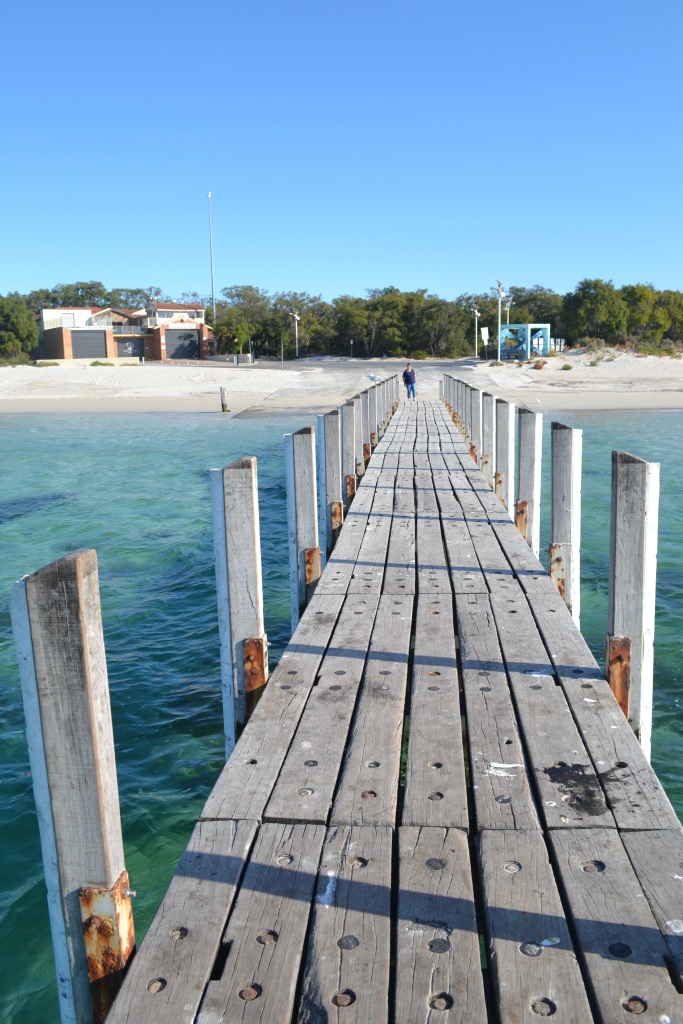
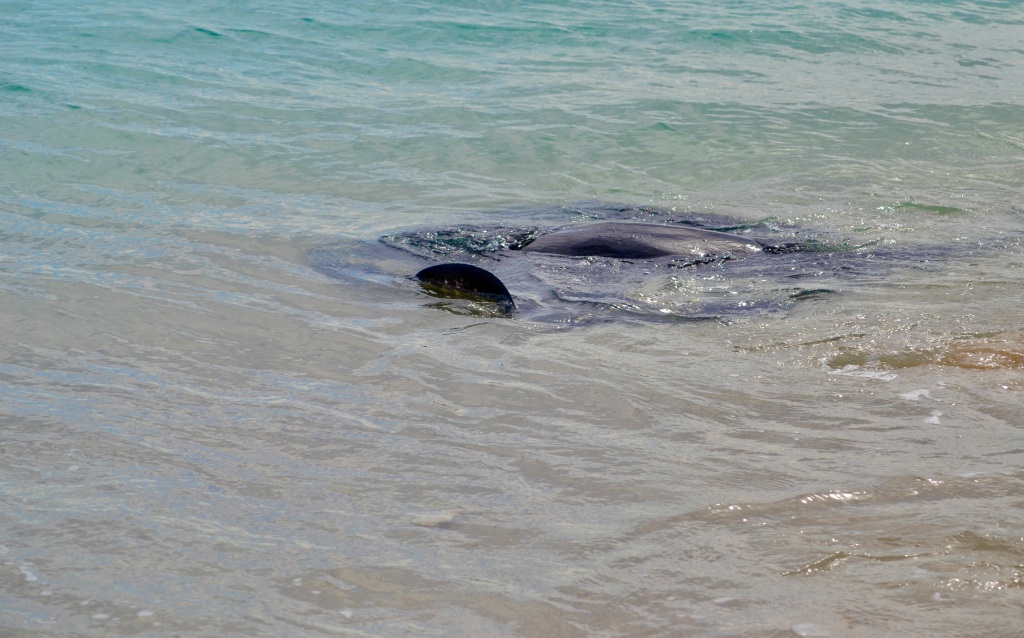
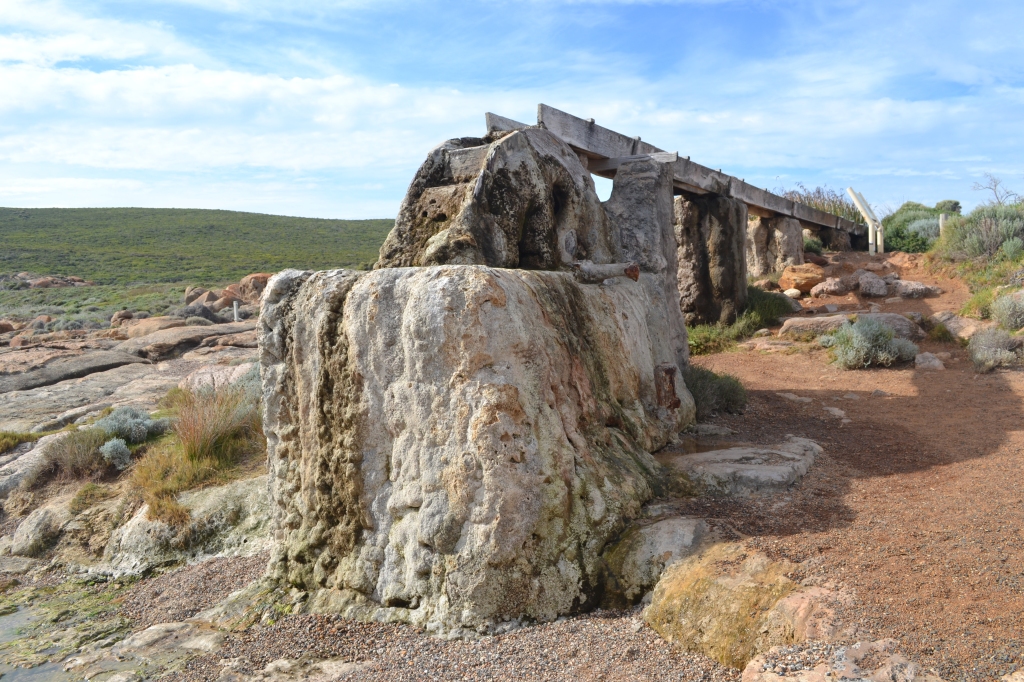
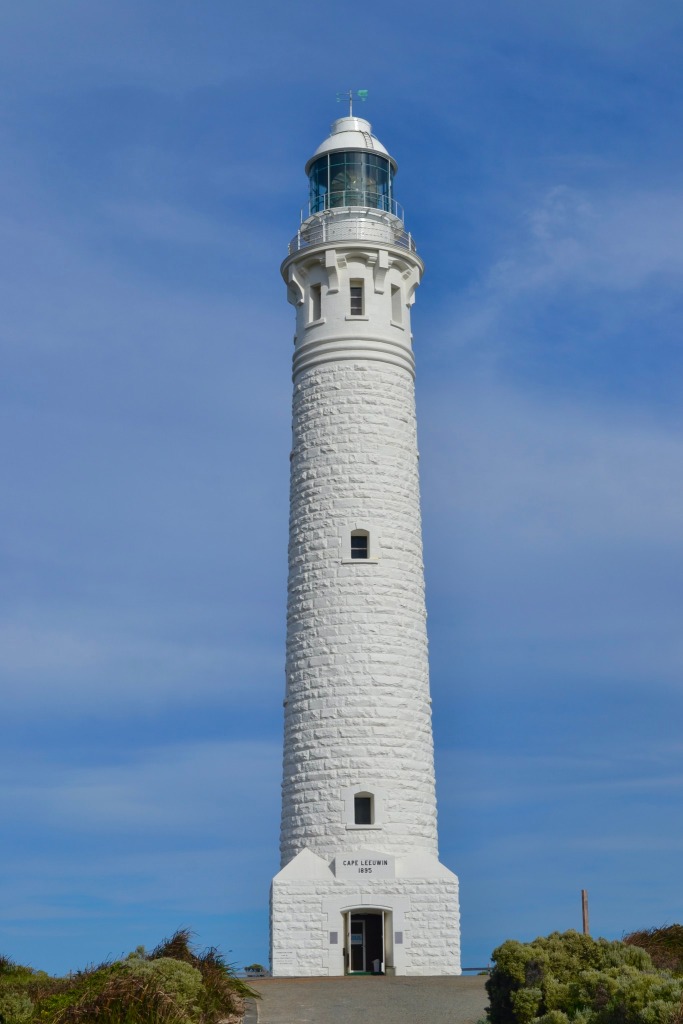
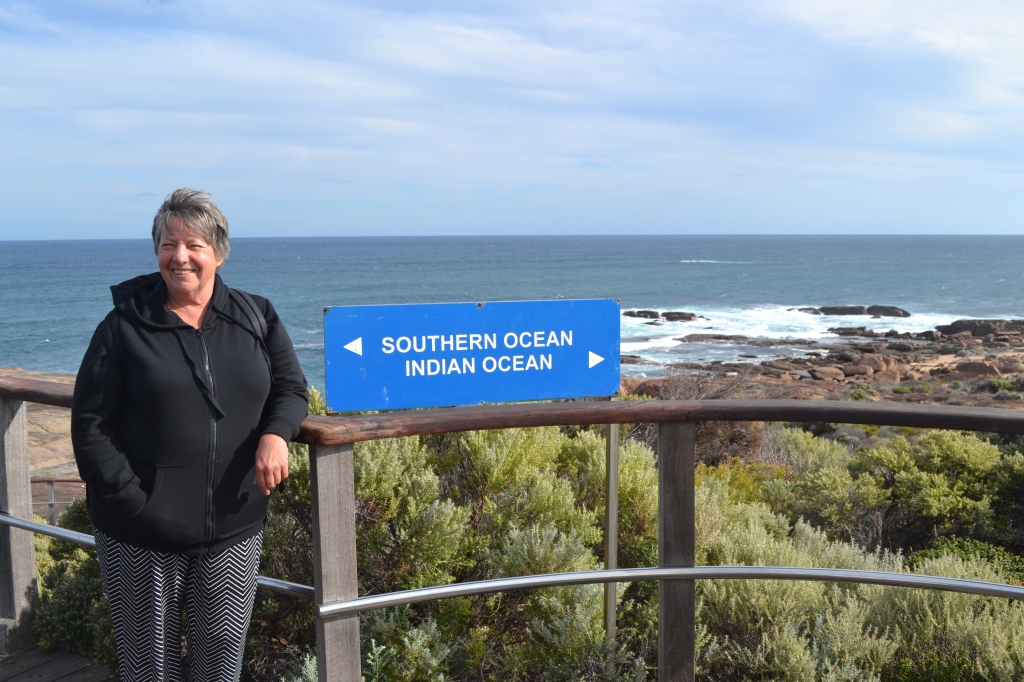
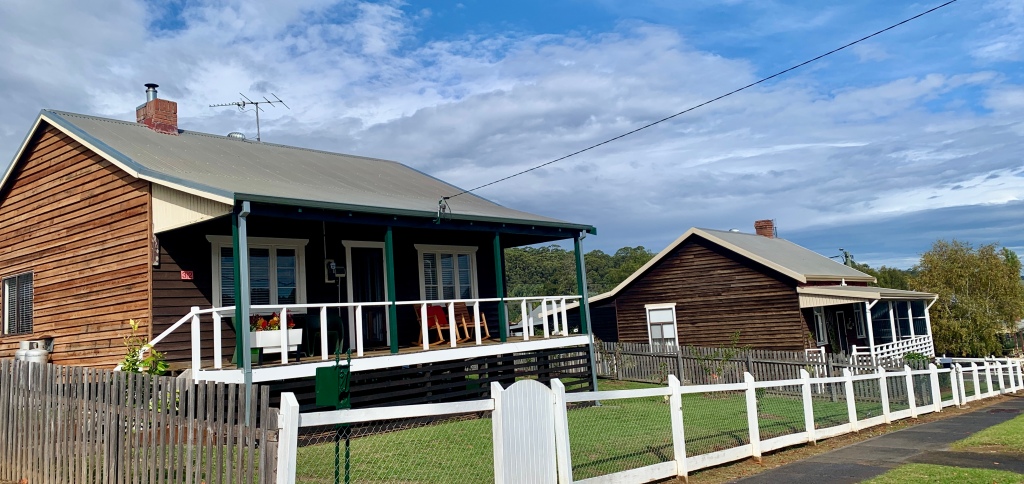
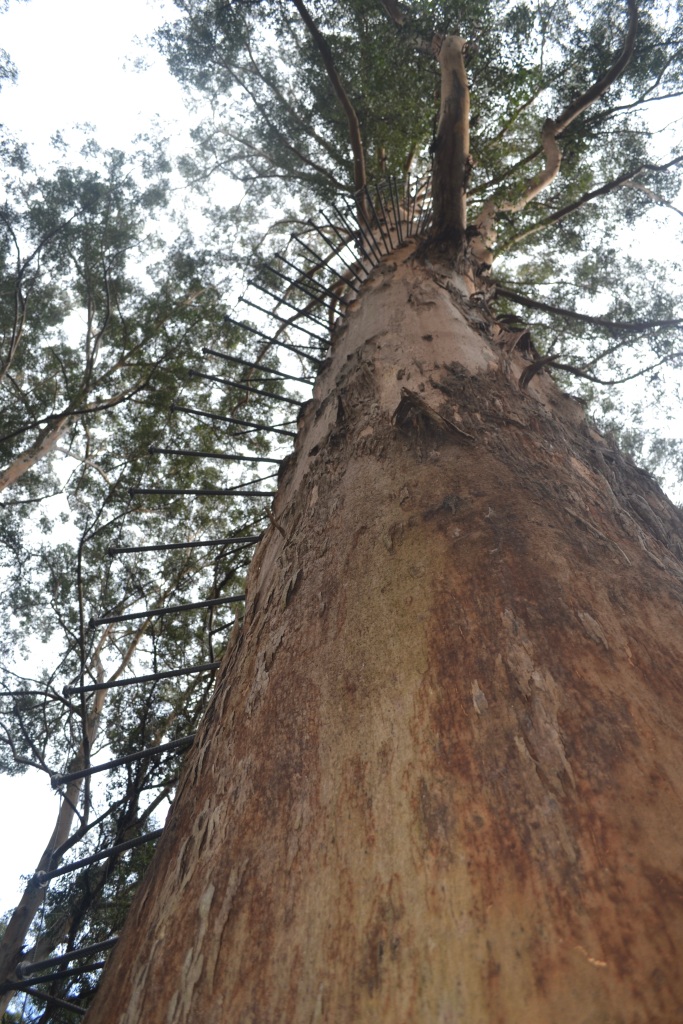
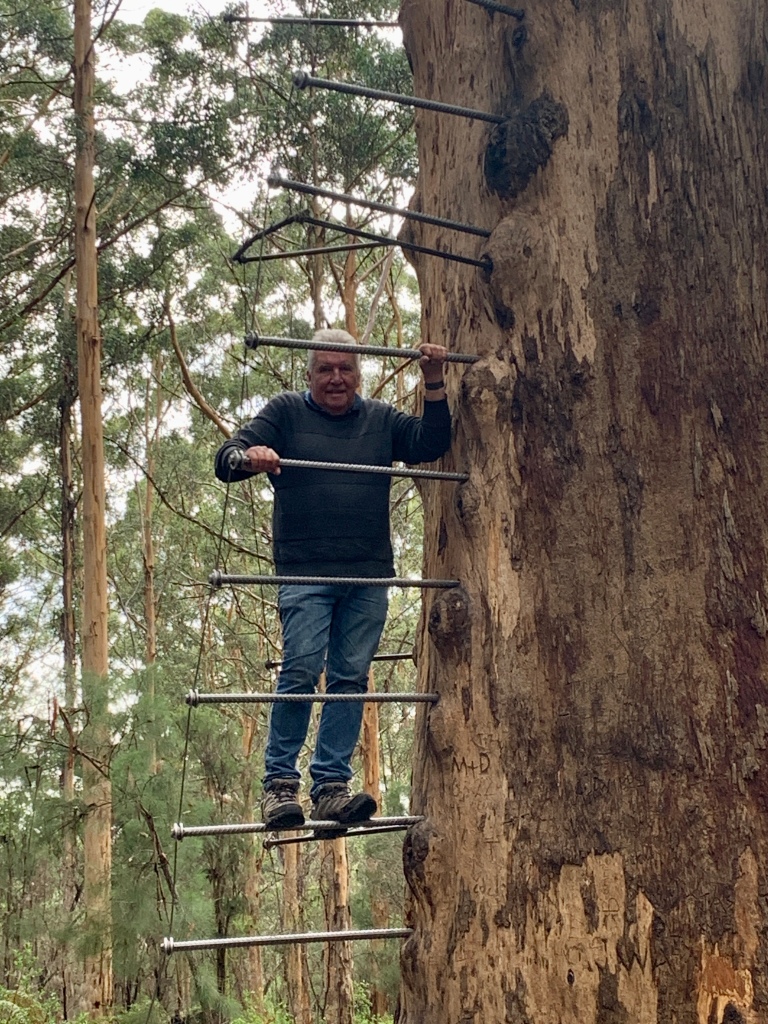

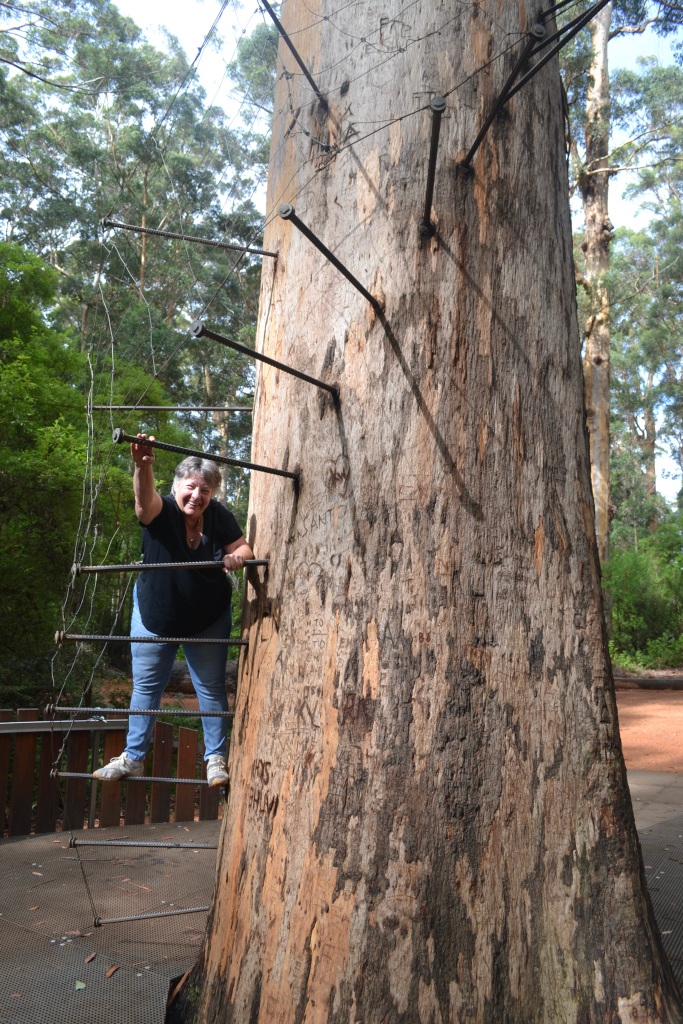

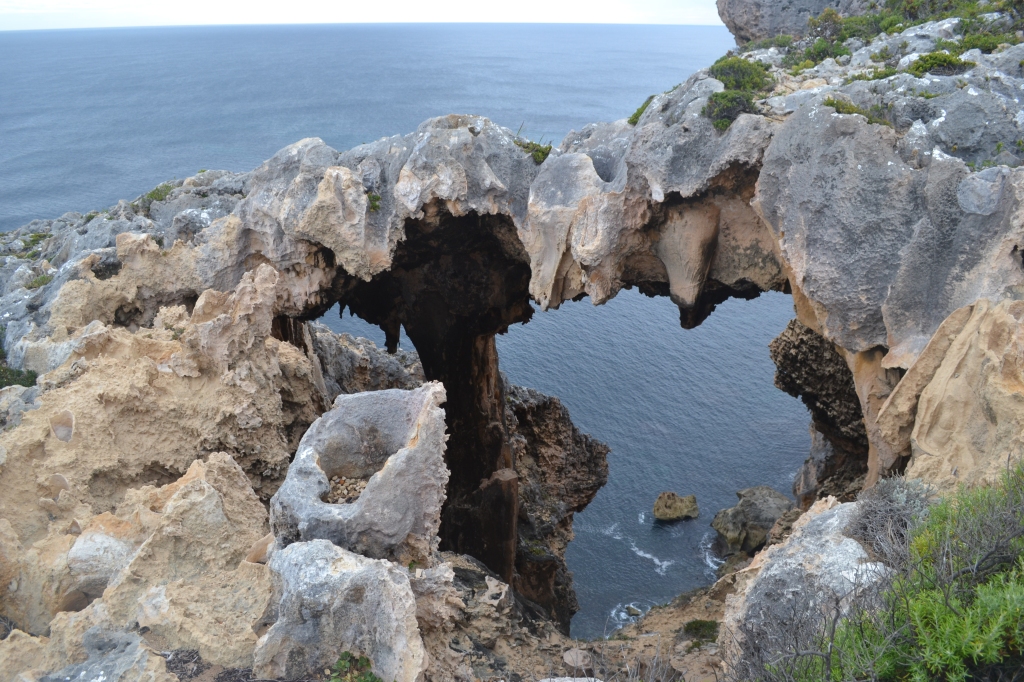
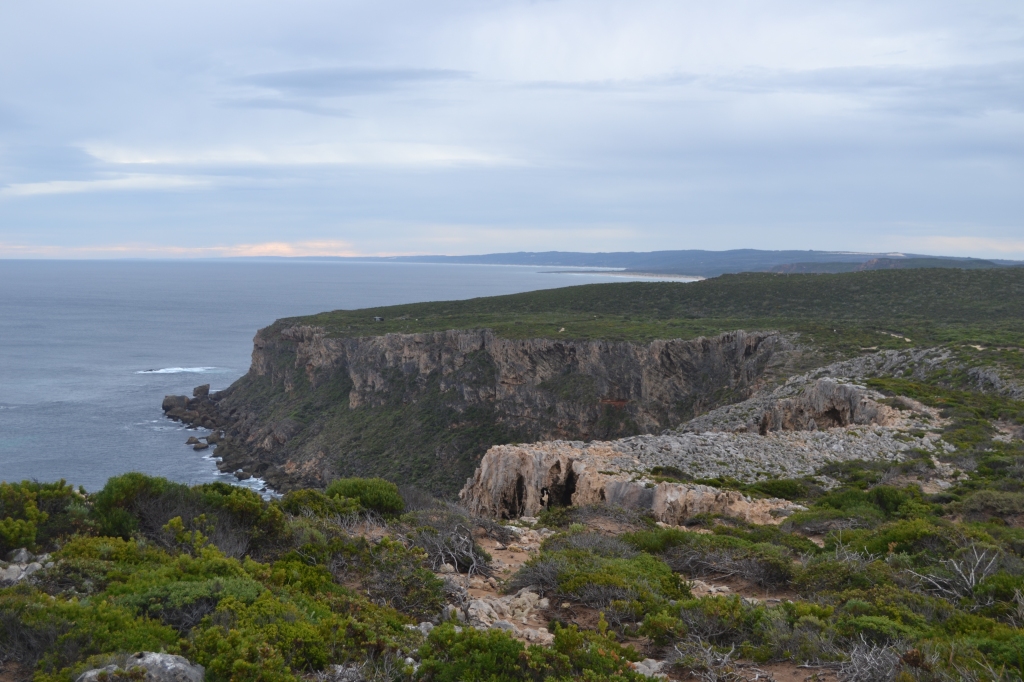

We headed off early the next morning to discover the wondrous trees of the Nornalup National Park, Walpole. We arrived at the Giant Tingle Tree Loop walk which was only a kilometre round trip. The trees are so tall and they glisten when the sun peeps through the trunks and hits the branches. In the middle of the walk, you come across the Giant 75m survivor. The centre was a black charred mess where a fire had eaten away the middle of the tree. The outside stood strong and boldly continued to grow up to reach the sun.
Turning off the Vasse Highway to the Southwestern Highway we stopped in at The Valley of the Giants treetop walk. This was not Kens favourite place but one I was looking forward to. The walkway is suspended in the air 40 metres above the ground with the red tingle trees still towering above you. The walkway is strong and feels safe, but it does sway a little so can be a bit unnerving. It is not as spectacular as I was expecting but I was happy to have mastered it. Once on the ground again there is a lovely walk through the forest viewing some very huge grotesque and gnarly red tingle trees. Another large tree where the centre was missing was the pinnacle of the walk. Personally, we thought the earlier short walk through the forest was a little more enjoyable as it was a lot less commercialised.
Moving on we arrive at William Bay National Park. There are several walks from the car parks, one being to Elephant Beach. Walking toward the viewpoint on a sandy track is hard on the legs but eventually you get to a lookout where you can see the massive rocks huddled together looking like the rumps of several elephants standing side by side. Further investigating found a large expanse of rock to climb over and wooden steps leading down to crevices hiding a beautiful beach with turquoise coloured water. By this time my legs were objecting furiously so while I sat and admired the view on a bench, Ken wandered up and over the surrounding grassy hillsides searching for better photo angles of the beach and the rocks. Although he found what he wanted I think his legs were burning on the return trip. A couple of hectic hours, finding accommodation and groceries and our heads had no trouble finding the pillows that night.
The next morning, I woke at 6.00am. Sneaking a look out the window of the camper I saw the sun starting to rise. I quickly dressed and walked across to the beach front and sat on the bench to watch the skyline change its colours as the sun’s rays hit the ocean and the surrounding landscape. Several people jogged and walked past on their daily ritual, other than that the world was still and calm. With yellow, pink, crimson tones shining through the clouds it was spectacular way to start the day.
Another breakfast and the excitement started again. Today we are heading to the other side of Albany to visit Torndirrup National Park. Our first stop The Gap. Once again, the car park and walkways are well maintained and easy to navigate. The platform reaches out and over the surging waters below. The waves crash upon the 40-metre-high granite walls spraying water up the sides never to reach the top. Looking out at the walls you see what looks like huge building blocks sitting on top of each other, threatening to crash into the sea below. You wonder how they do not fall. Just opposite the pathway leads to another viewing platform. Here the waves have slowly eroded the granite over millions of years. Boulders have collapsed creating a bridge over the ocean. Again, another marvel that makes you wonder how long it has been there and how long it will remain. Next, we took the 1.6 return walk to see The Blowhole. We were out of luck this time, but the view was lovely. The walk was hard as it was steep going down and of course felt steeper coming back up. We were lucky enough to hear and see a group of five Carnaby’s black cockatoos in the bushes on the side of the path and the views of Bald Head and the Great Southern Ocean. We headed back to Albany trying to decide whether to rest at the trailer for the afternoon or look for something else to see. After driving a little in the town, we came across the Whaling station. We were in two minds about going as morally it did seem wrong in some way. We stopped for lunch at their café and made our decision. So pleased we did as the whole experience was interesting and informative. The first thing to explore is the Cheynes IV ship. The whole ship is open right down to the bowels. There is a lot of information available, and you are then able to go through the surrounding factories. There are interactive displays, lots of pictures and stories of the whalers and their families. The demise of the station took its toll on many people who even though one does not agree with the killing of the whales it is sad to see the result of closing the process. What did surprise us was the huge sperm whale skeleton in one of the factory areas. Standing up close you feel insignificant against the mass of the bone skeleton.
I must mention here the slackness of two teachers who were obviously on a field trip with a dozen or so young students aged approx. 6 to 12yrs. We were there for a few hours and on many occasions saw the children running wild, both over the ship and around the grounds and factory areas. There was little if no supervision from the teachers and certainly no control over whereabouts of the children at any given time. I would hate to think this was a regular occurrence on field trips. It was very disappointing, and I doubt the students learnt anything that day.
We left the station and wandered up to the small animal zoo attached. I read that the zoo is maintained by one lady. Although small it would be a big job for one to do alone. The first encounter has four white kangaroos. In this case not albinism but leucism, a fault in the pigment cells which causes the fur to be white but usually the skin and eyes are not affected. Really quite stunning to see them. There were also other kangaroos, wombats, possums, birds, and other Australian animals. A short but nice visit and a good end to the day. We were again exhausted and headed back to our trailer for an early night.
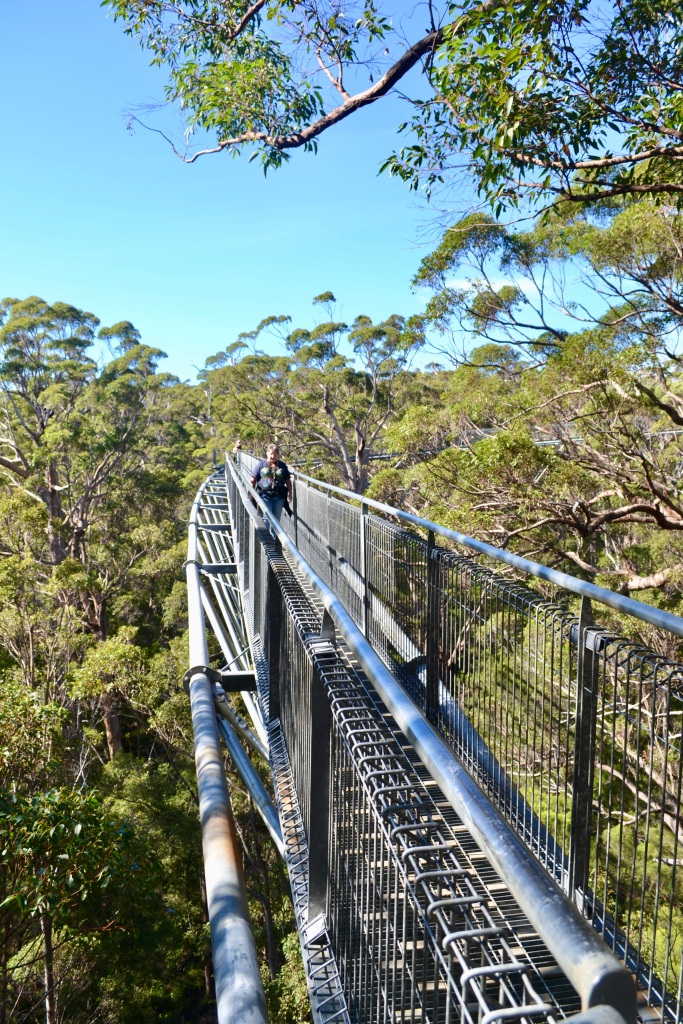


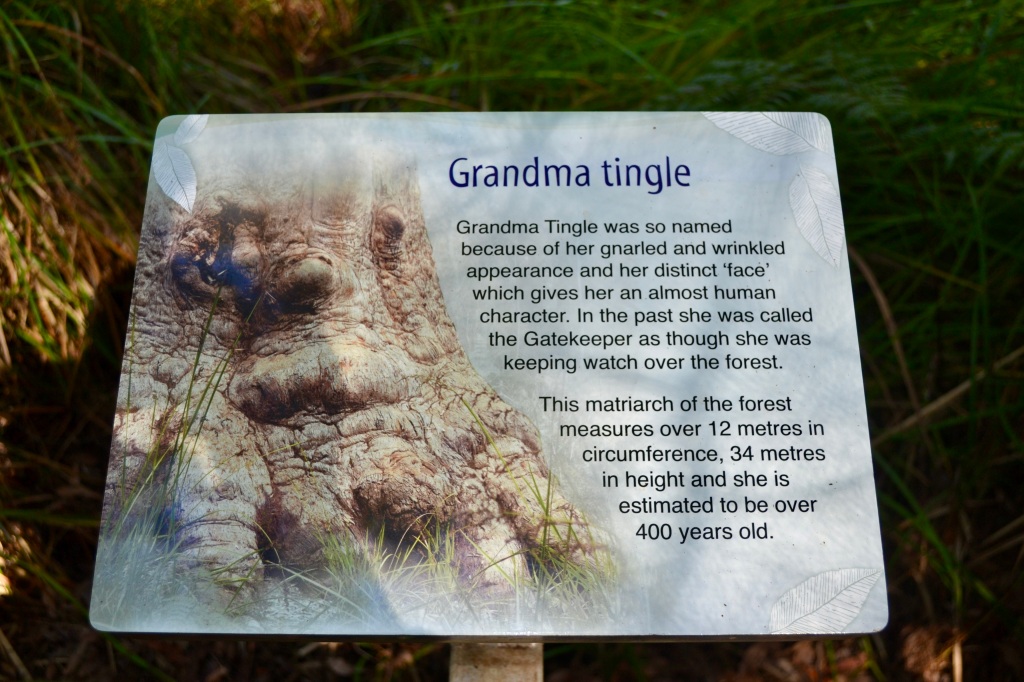
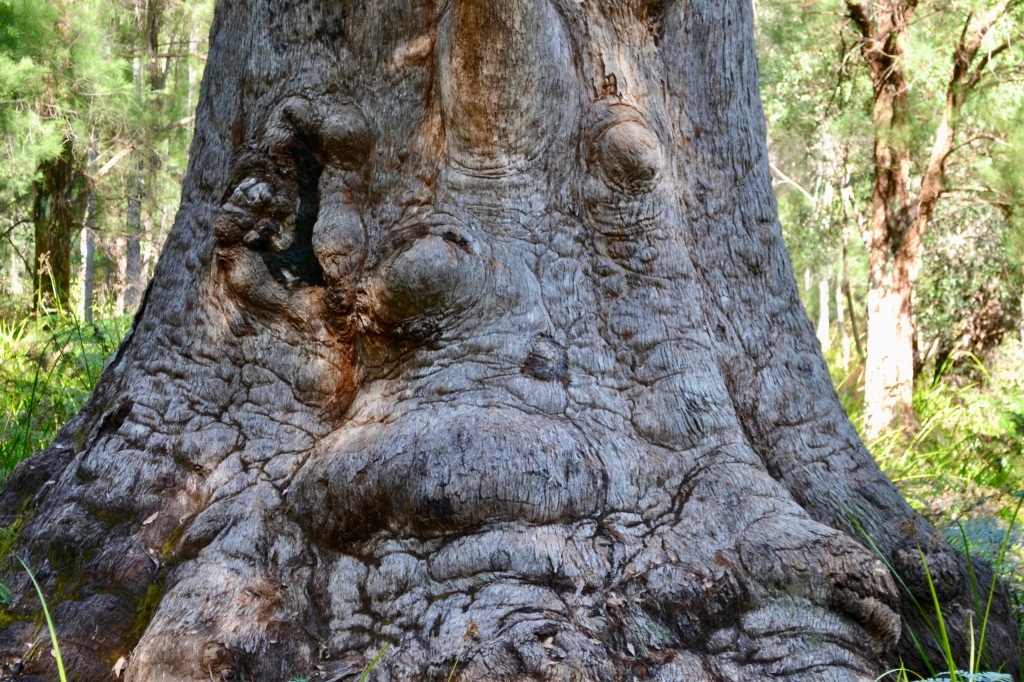


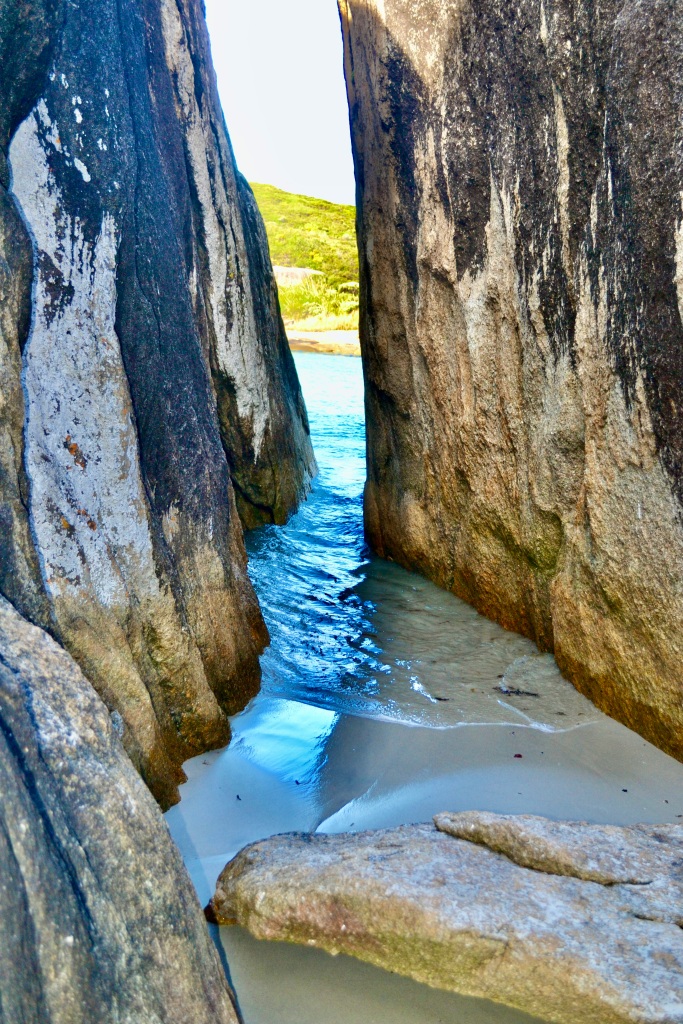
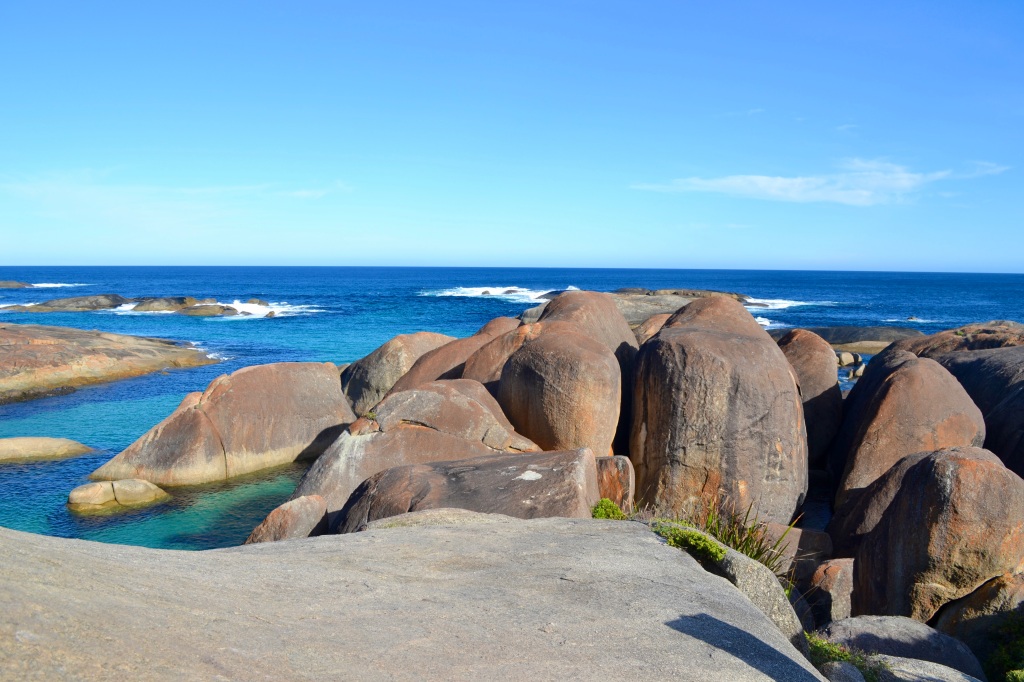
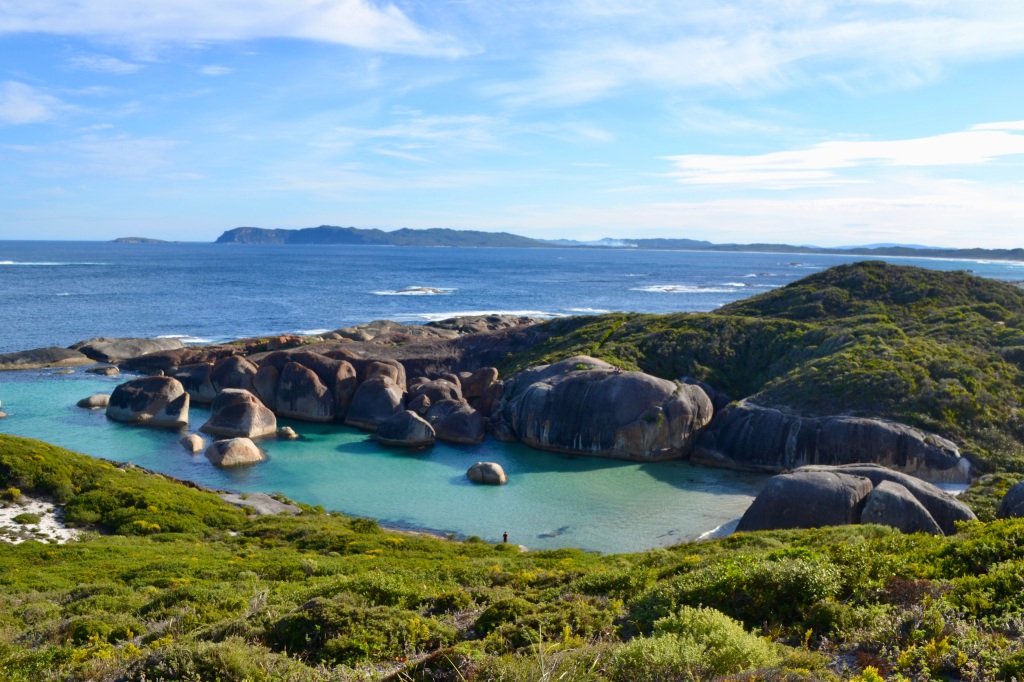
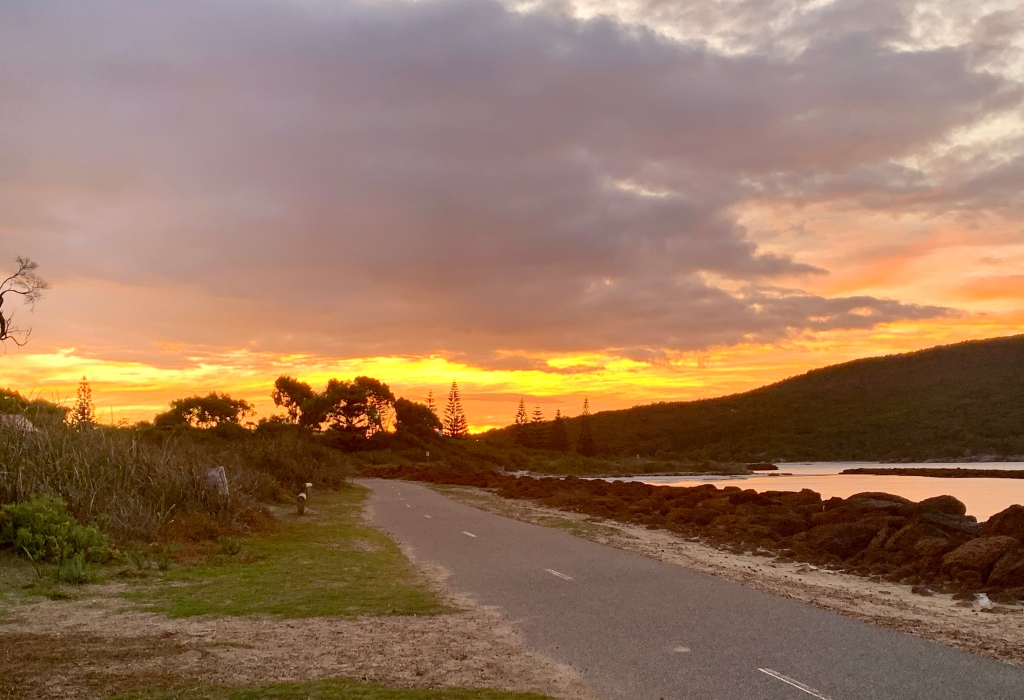

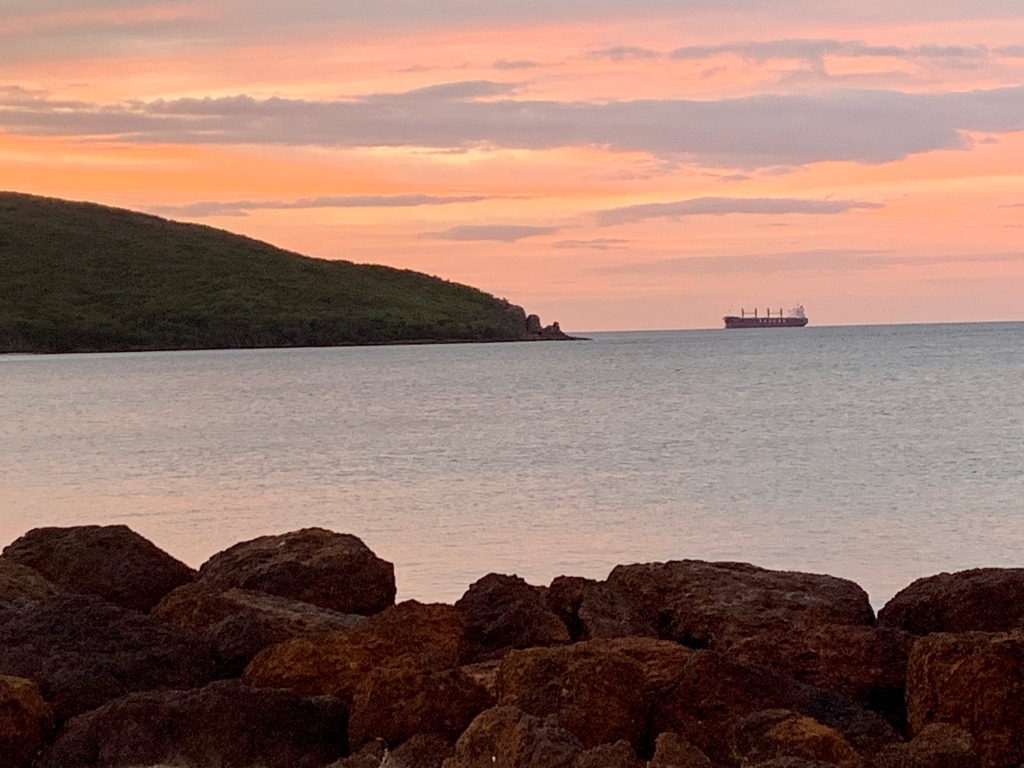

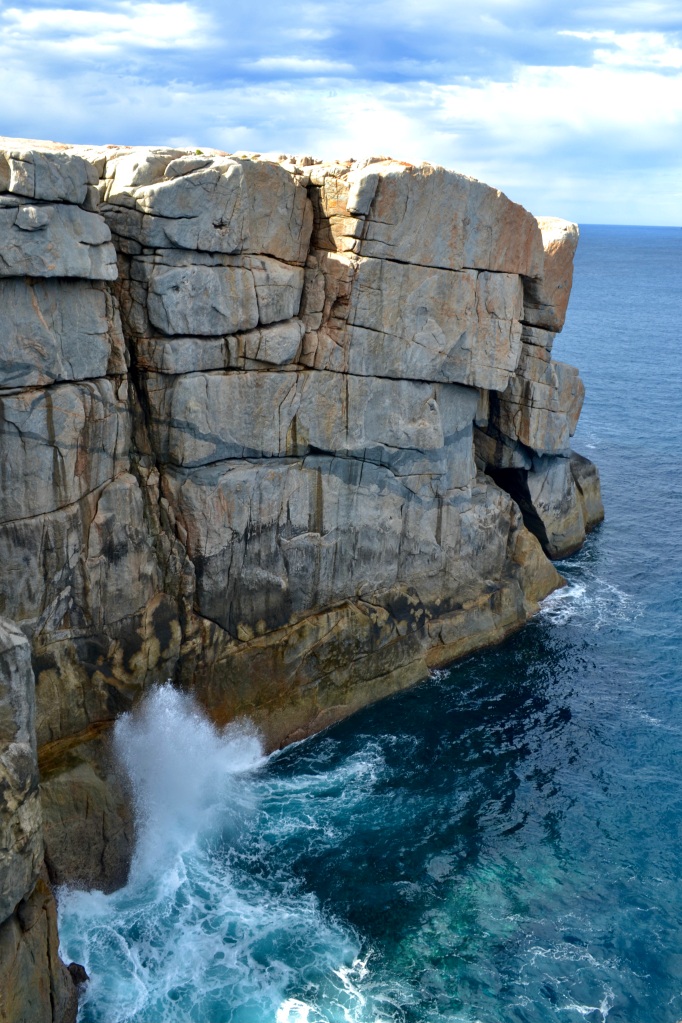
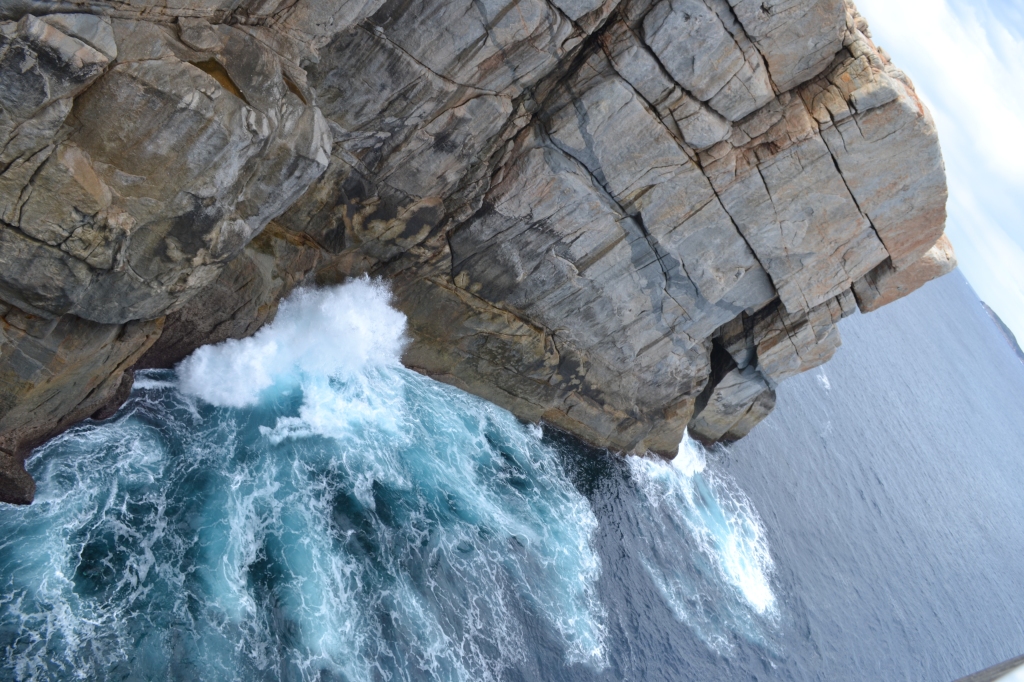
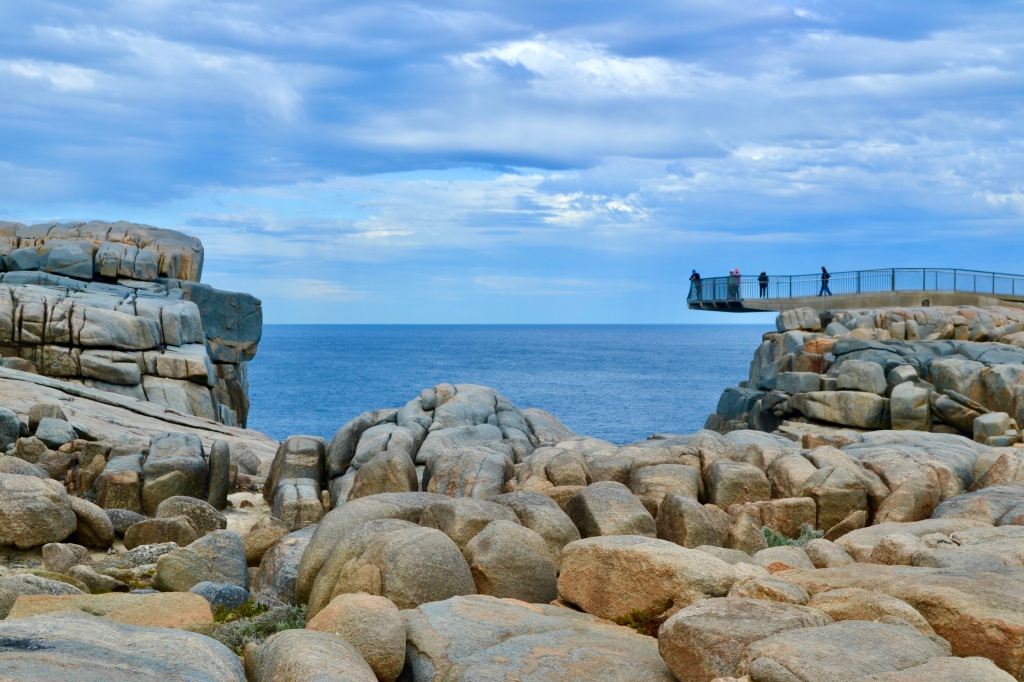
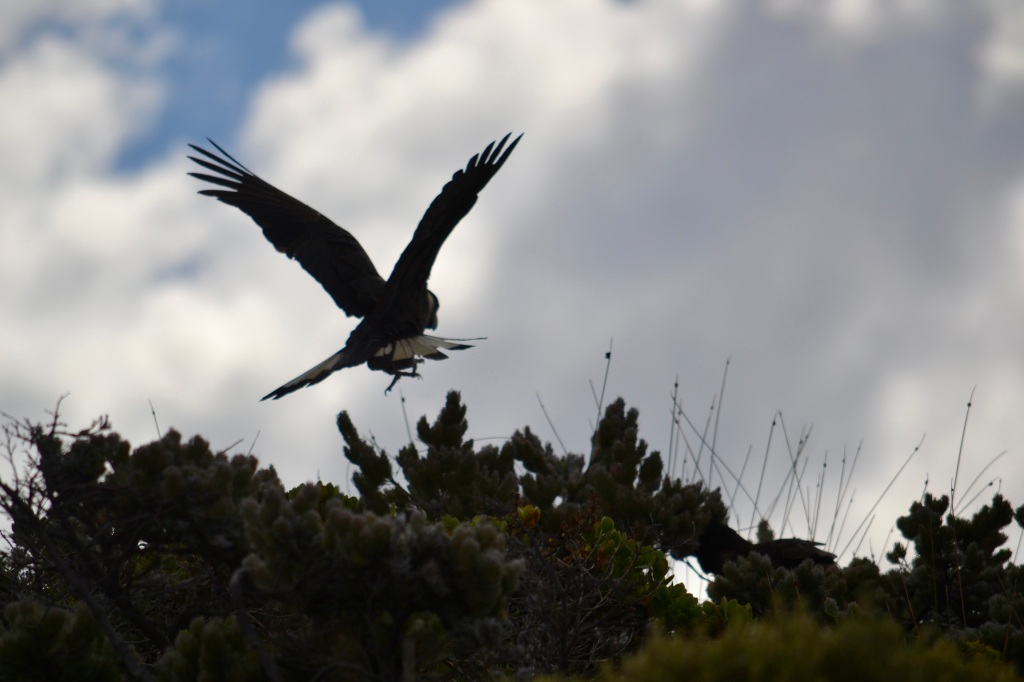
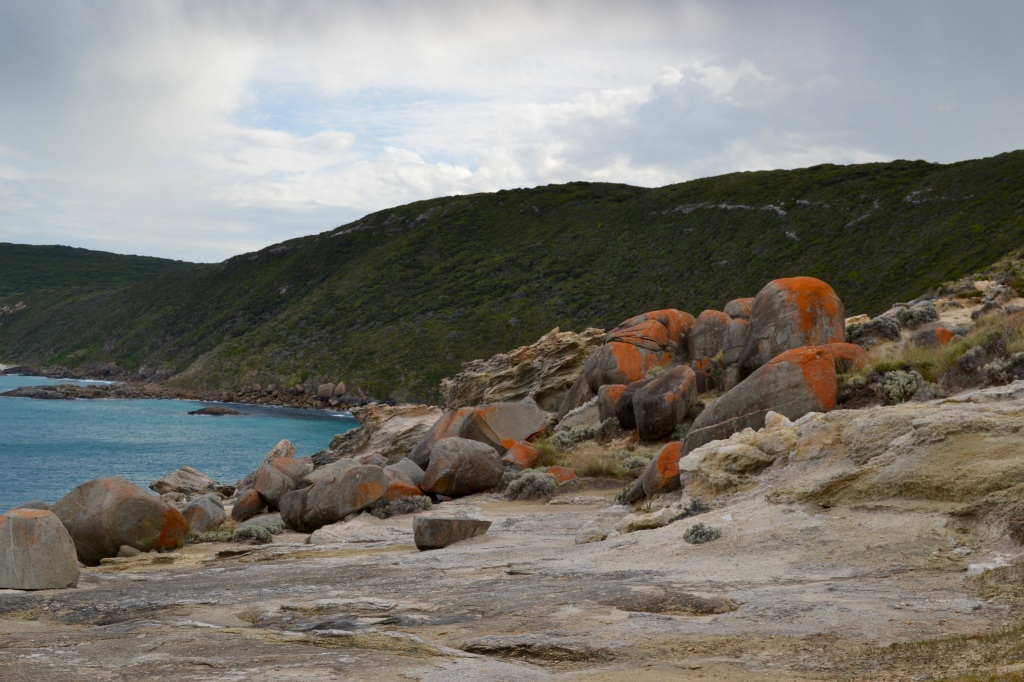

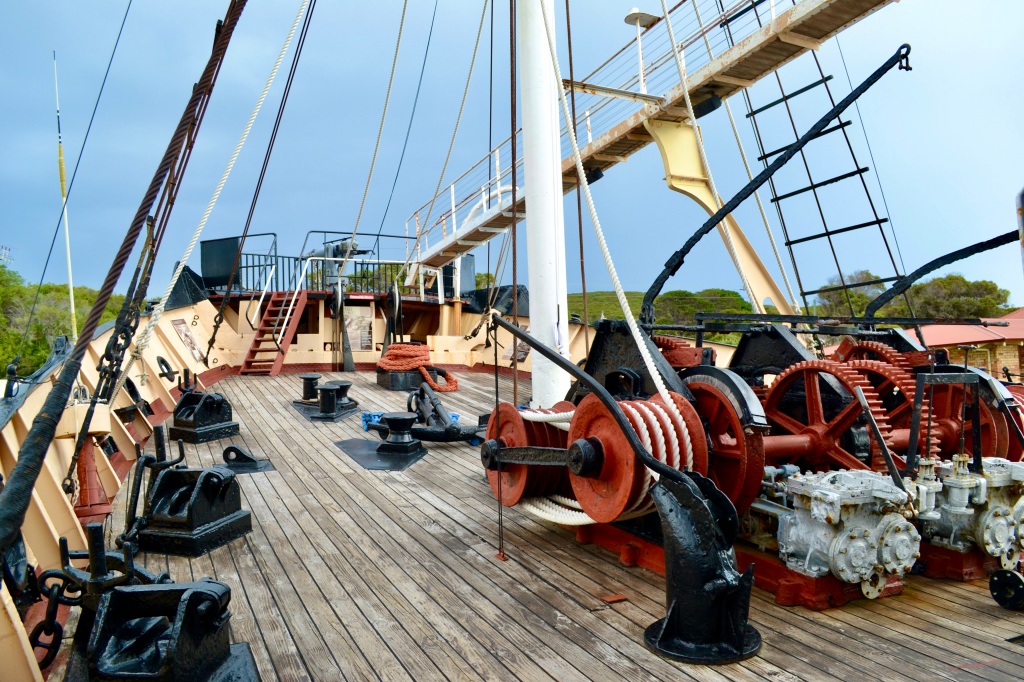
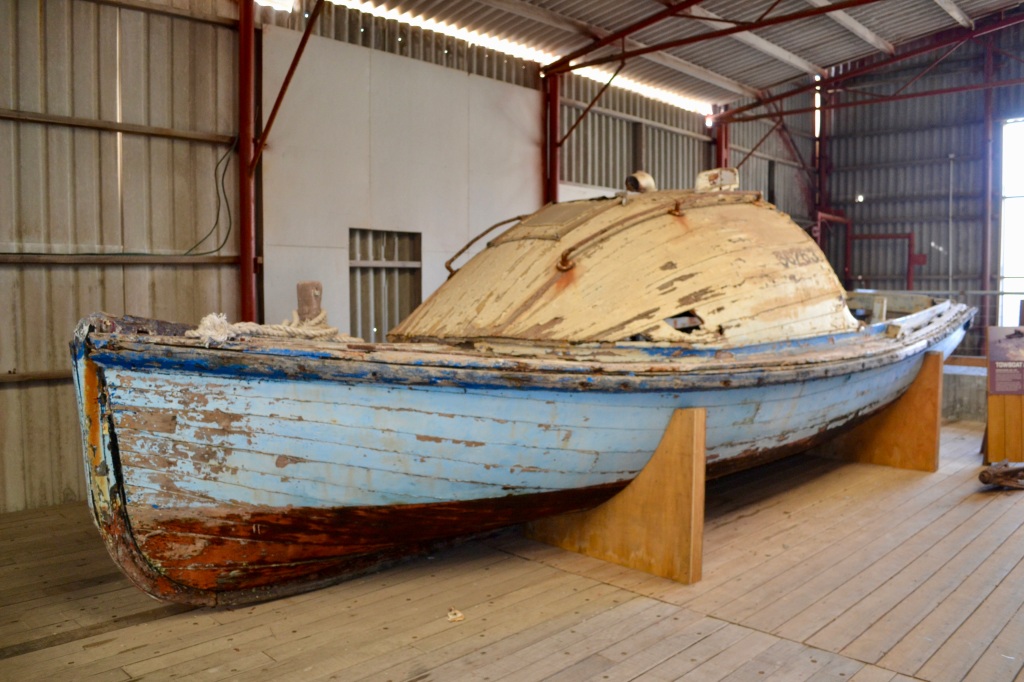
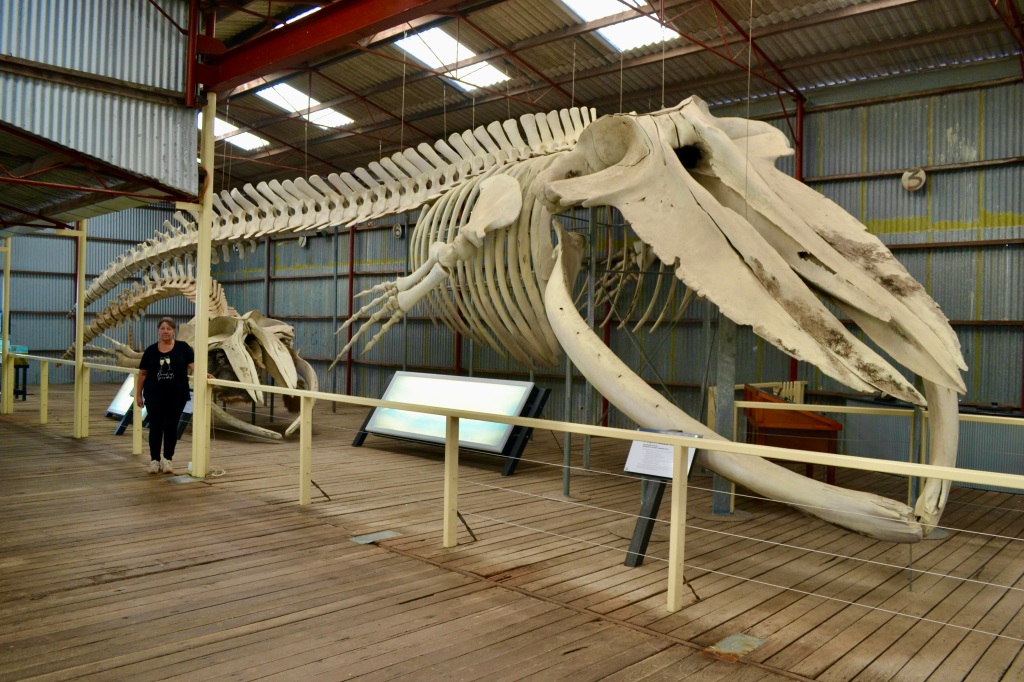
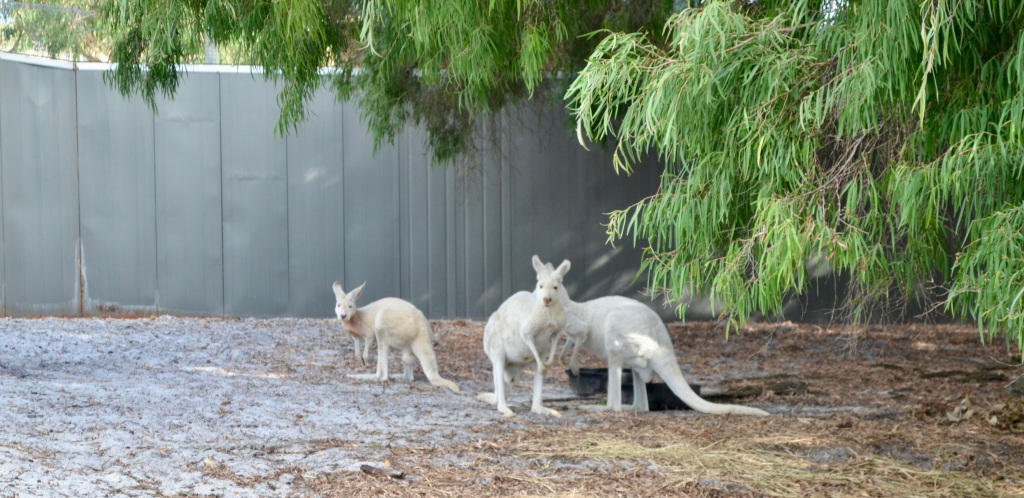
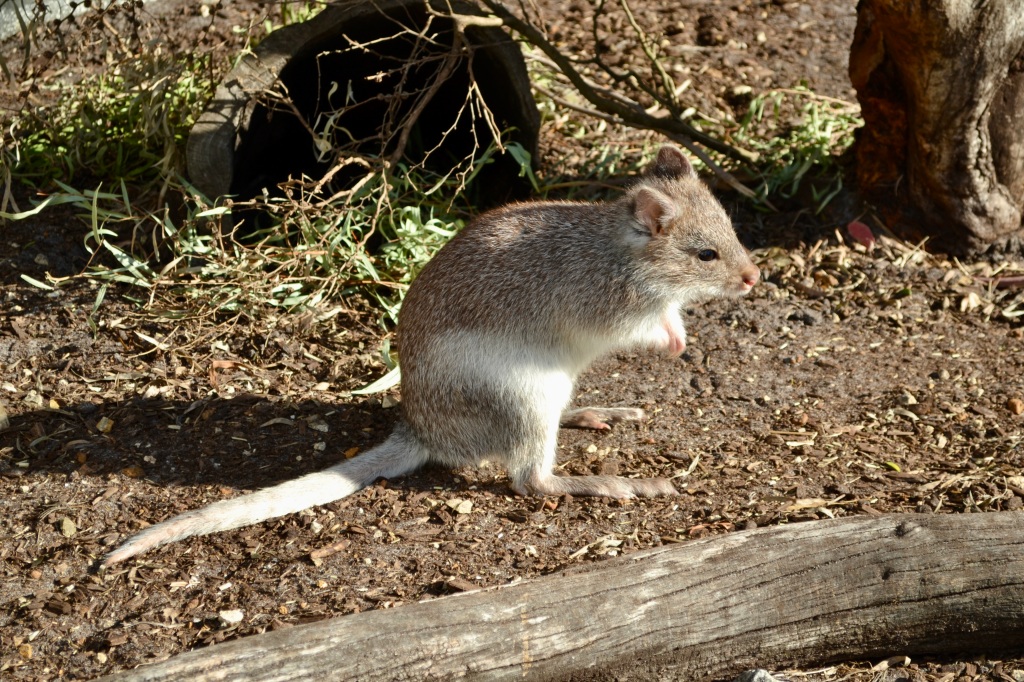
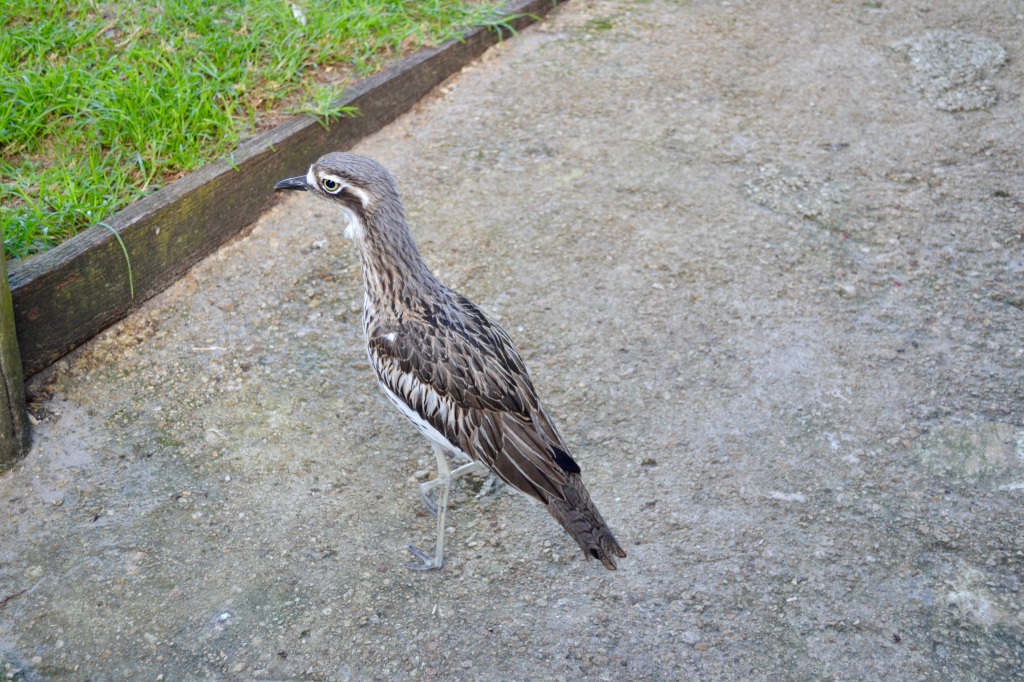
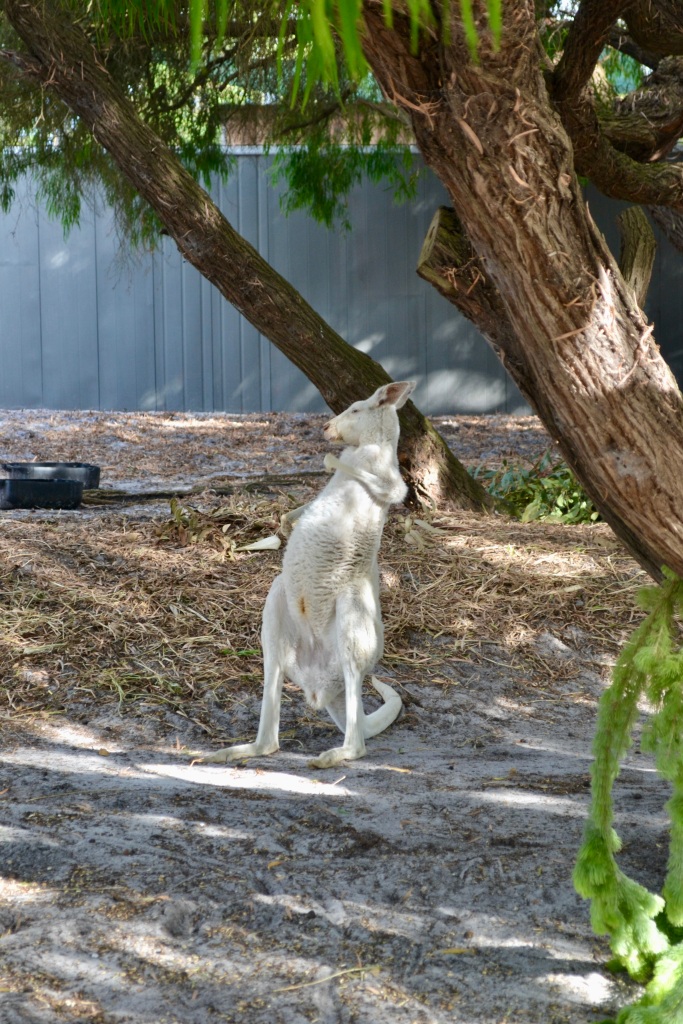
The next day we were heading inland to see some much-awaited landmarks. You will have to watch for the final part 5 edition find out where and find out about our escapades on our way home.
